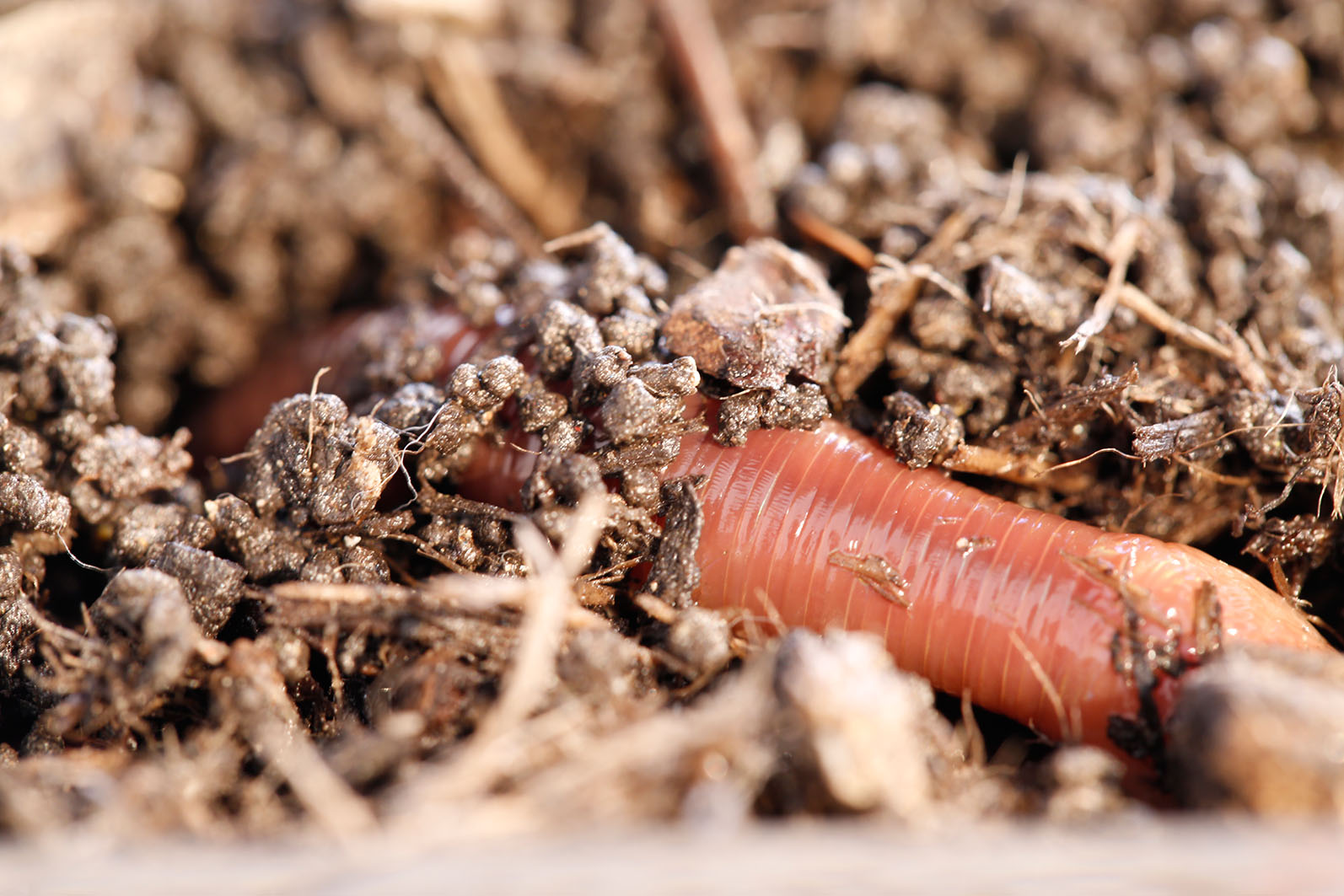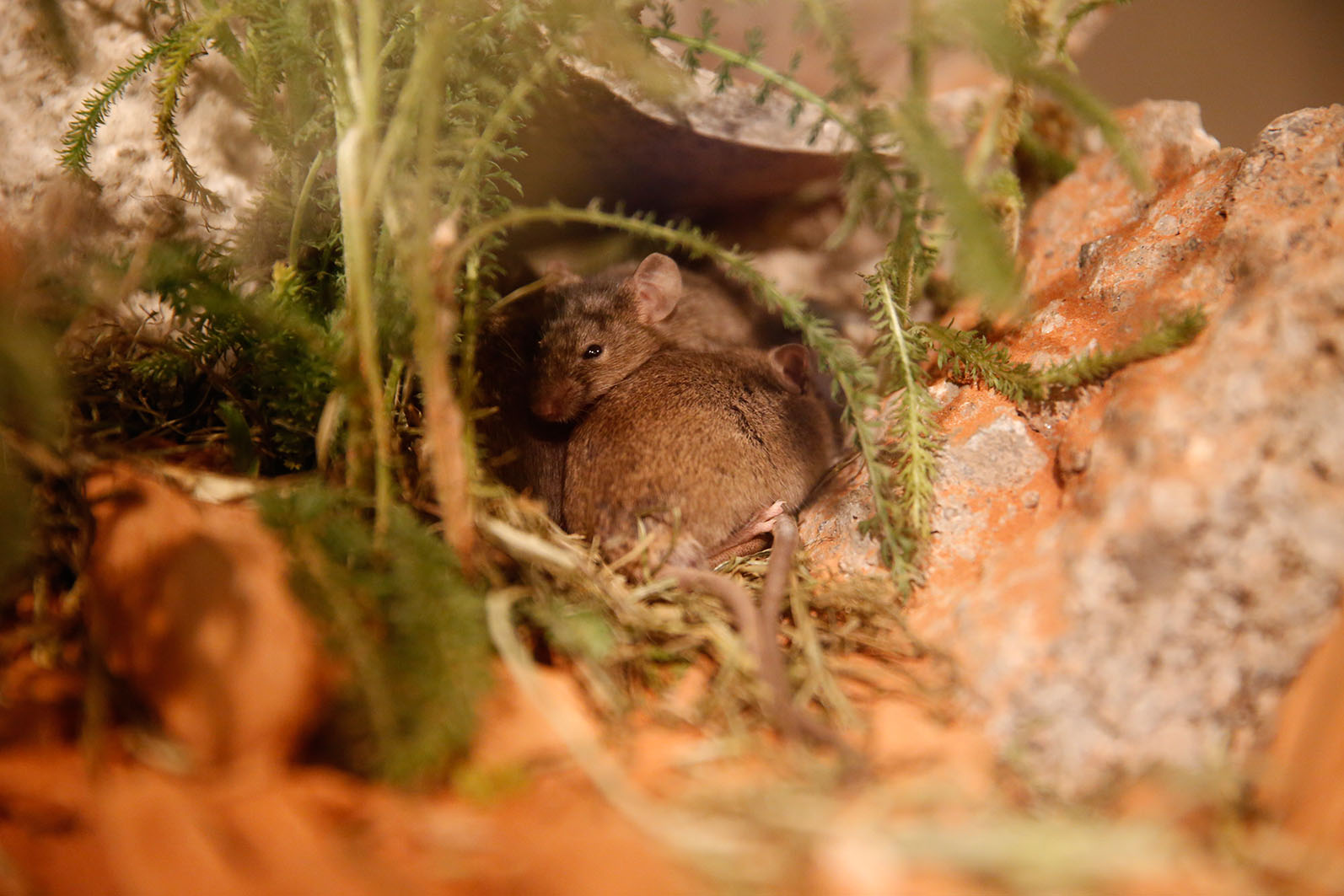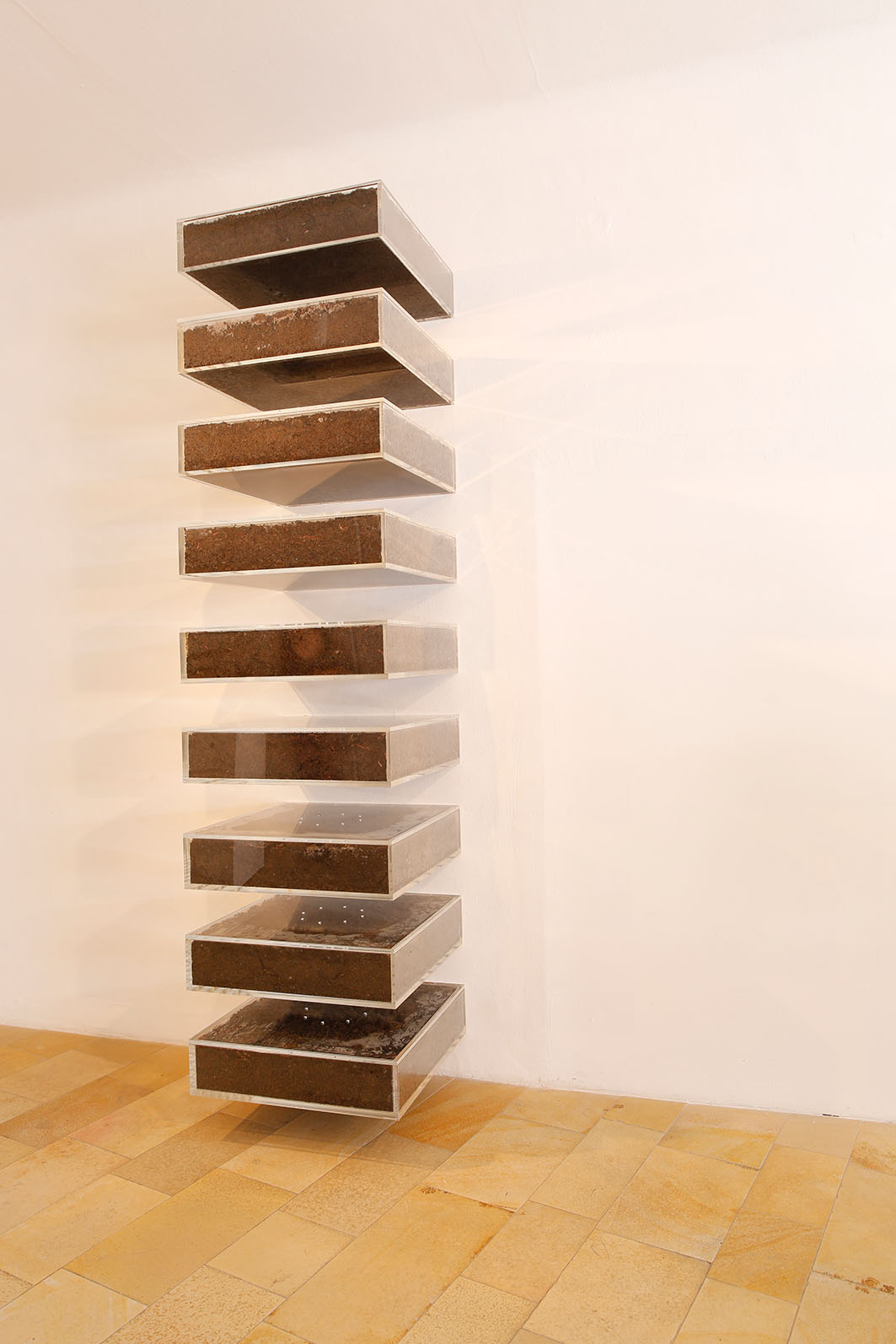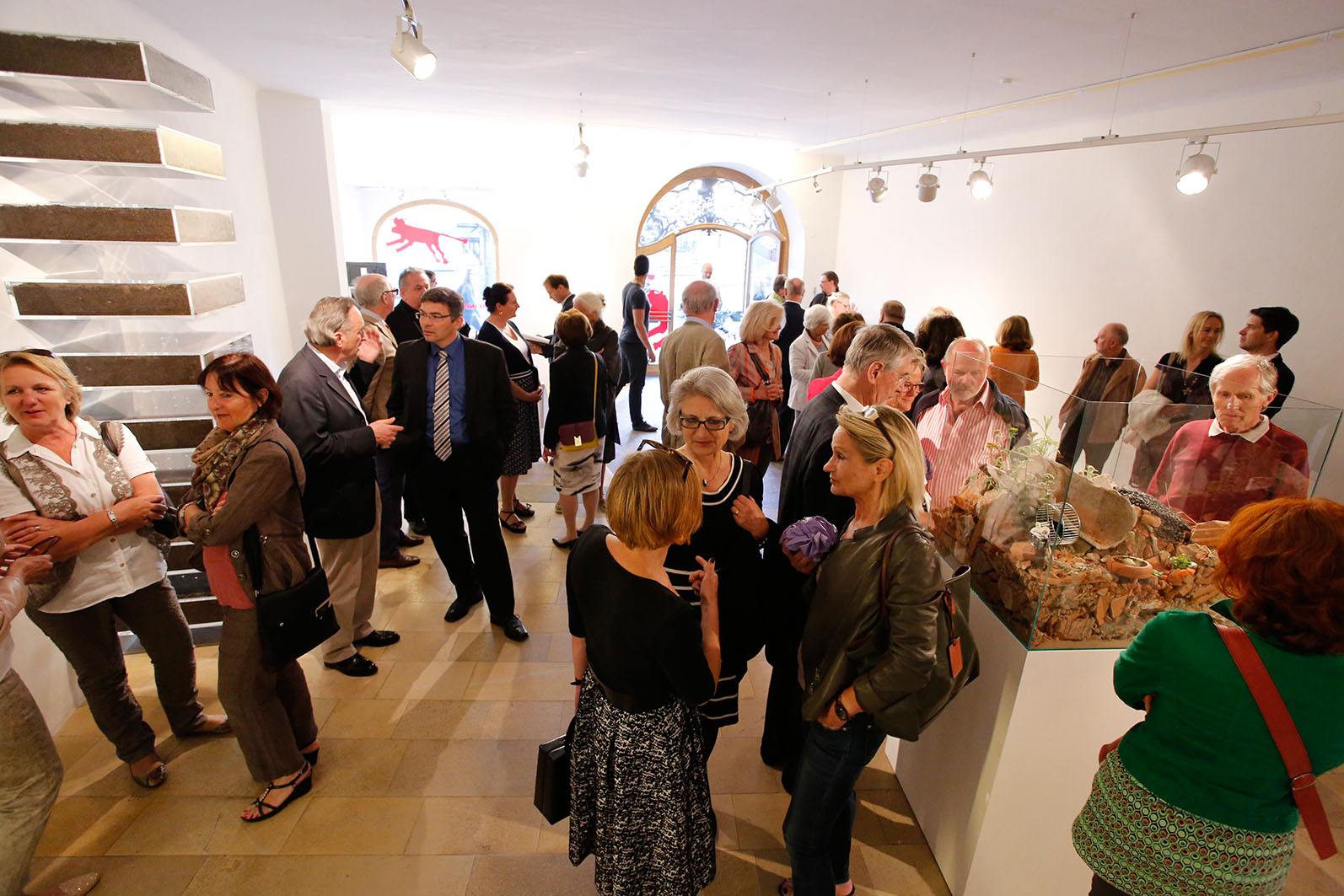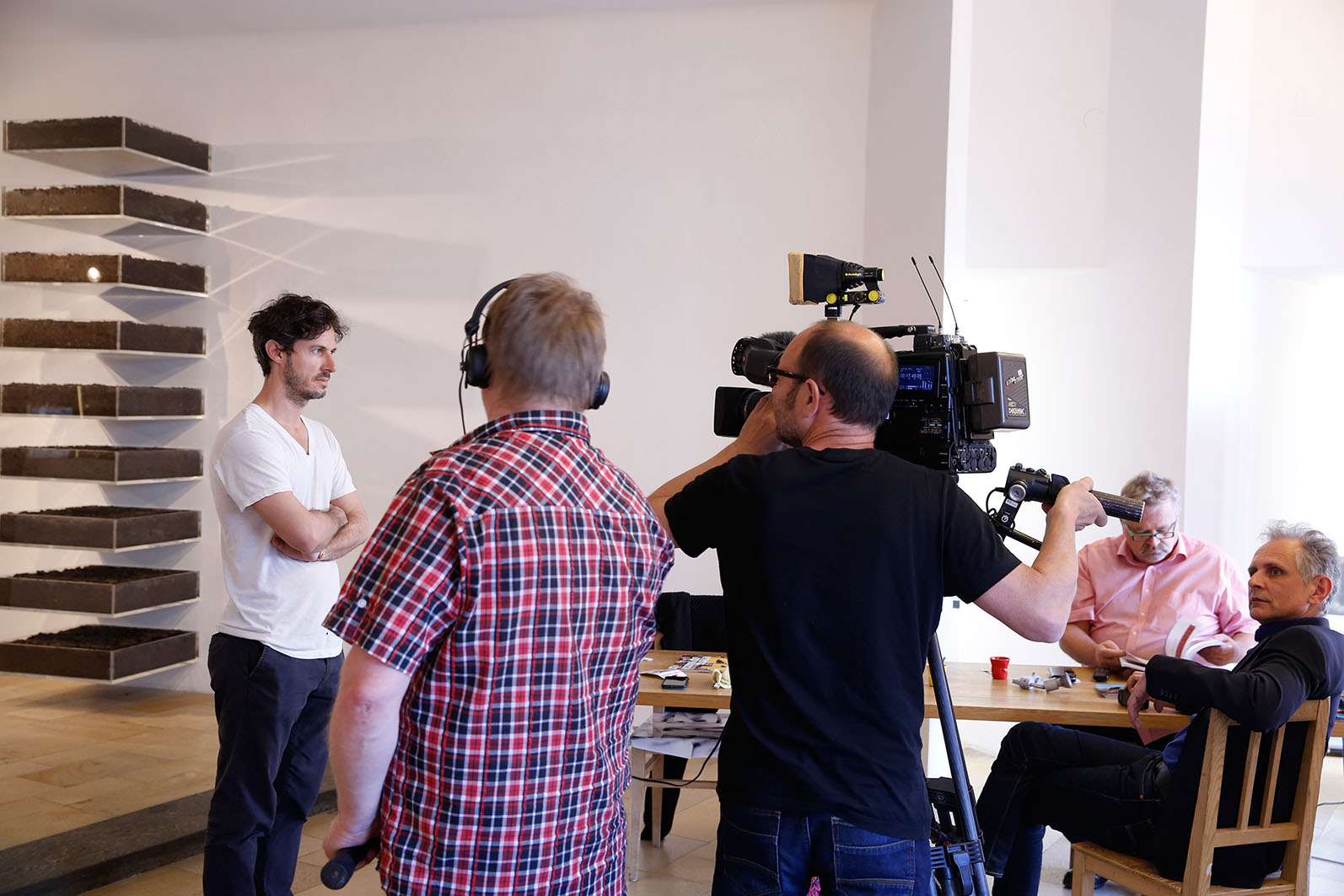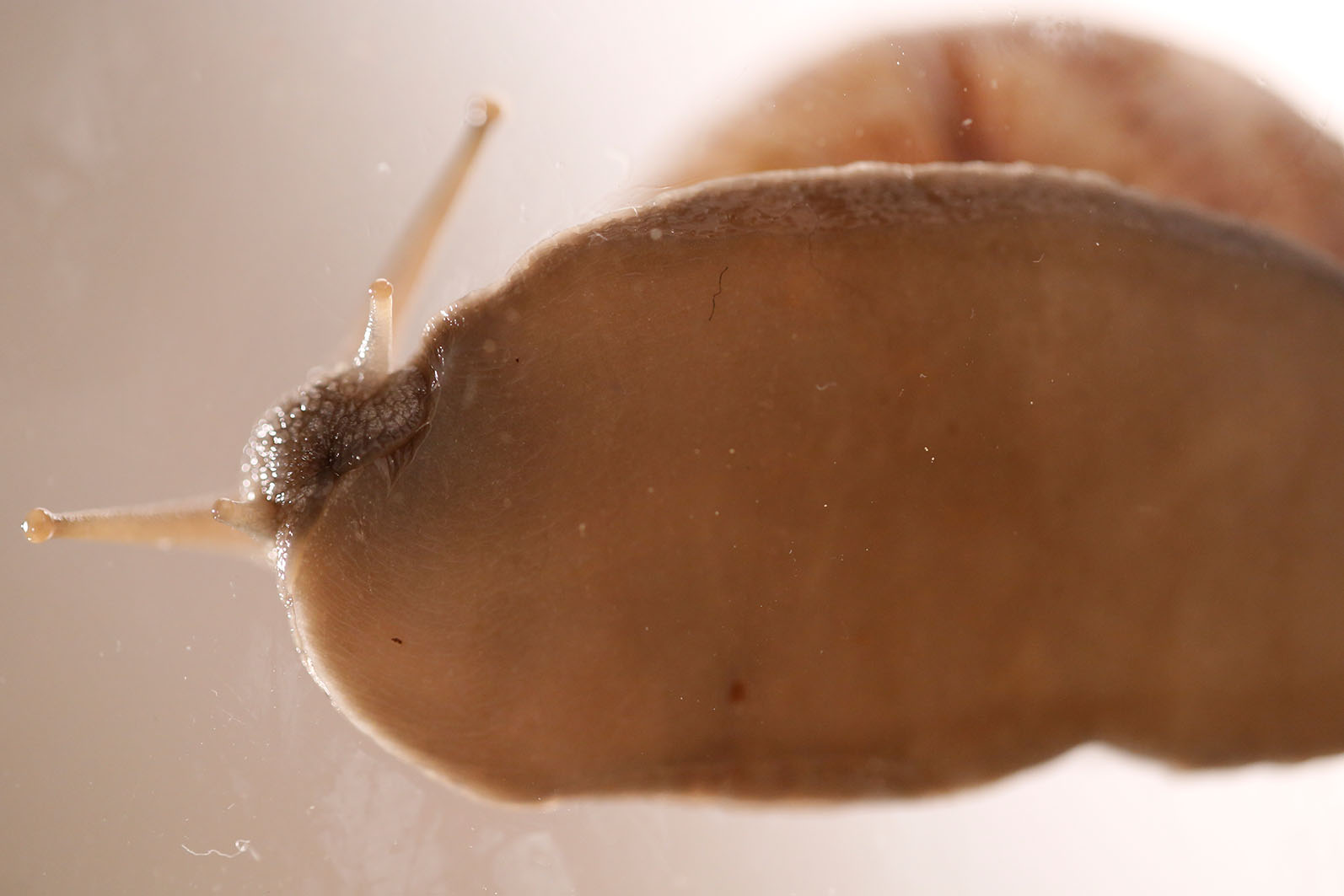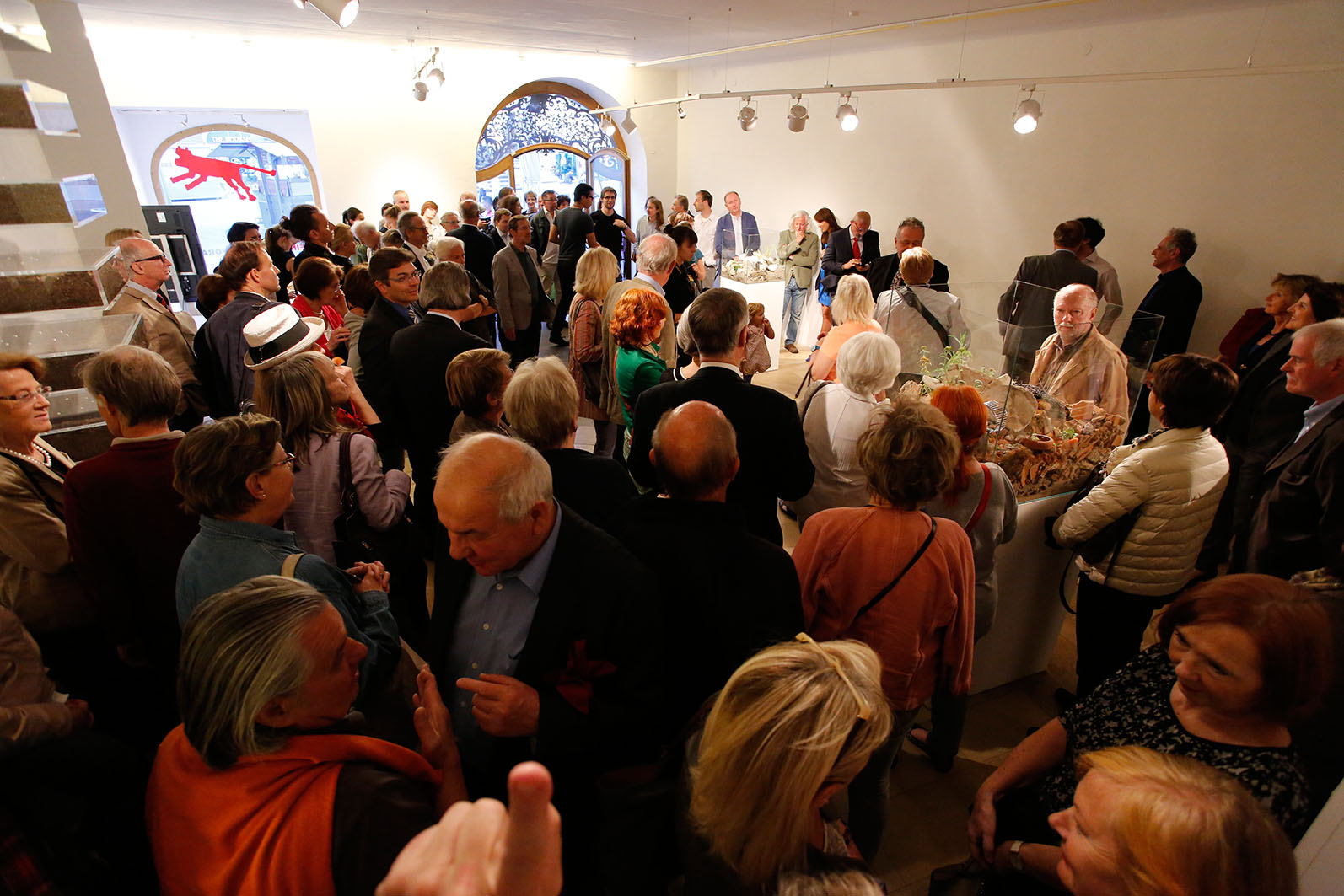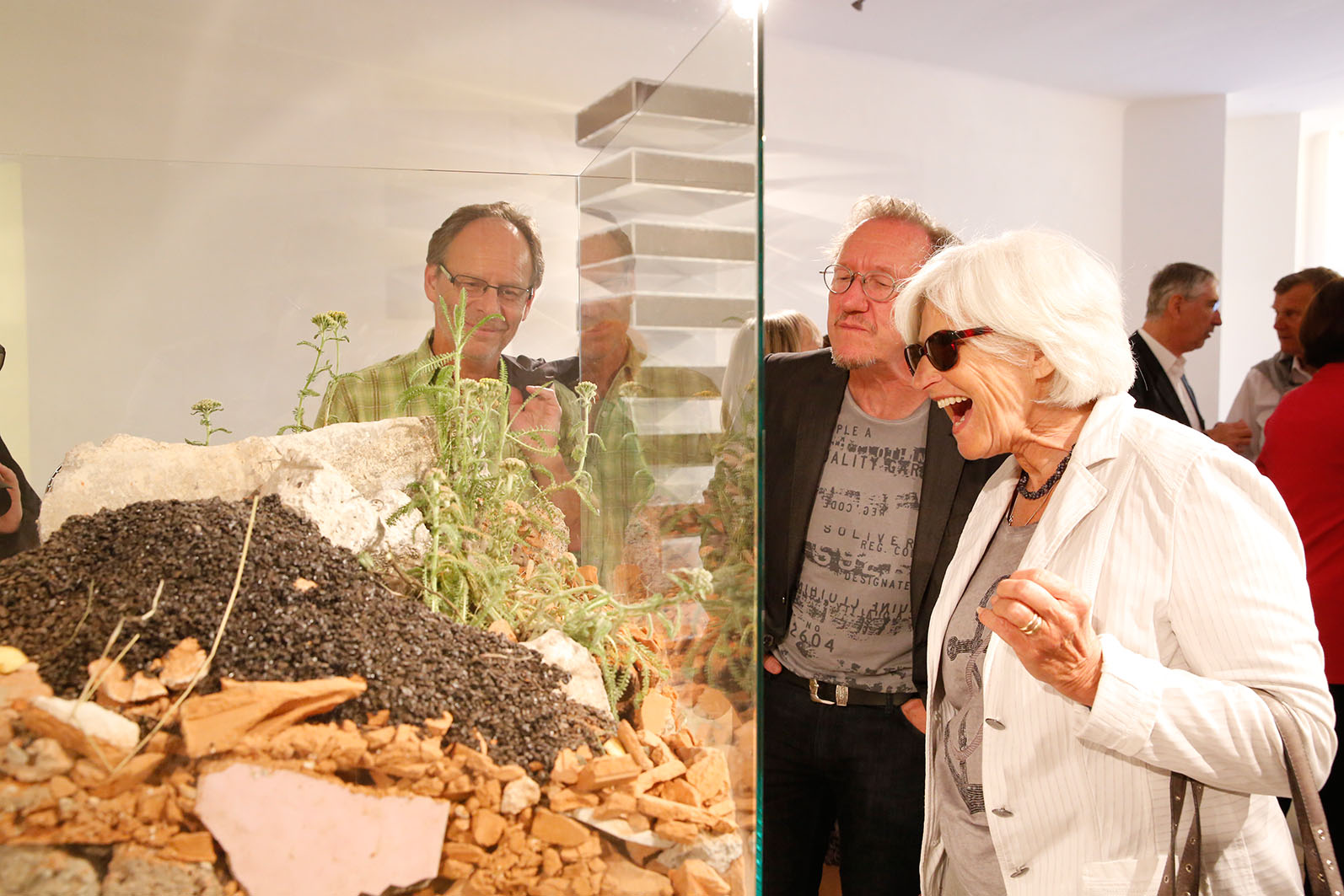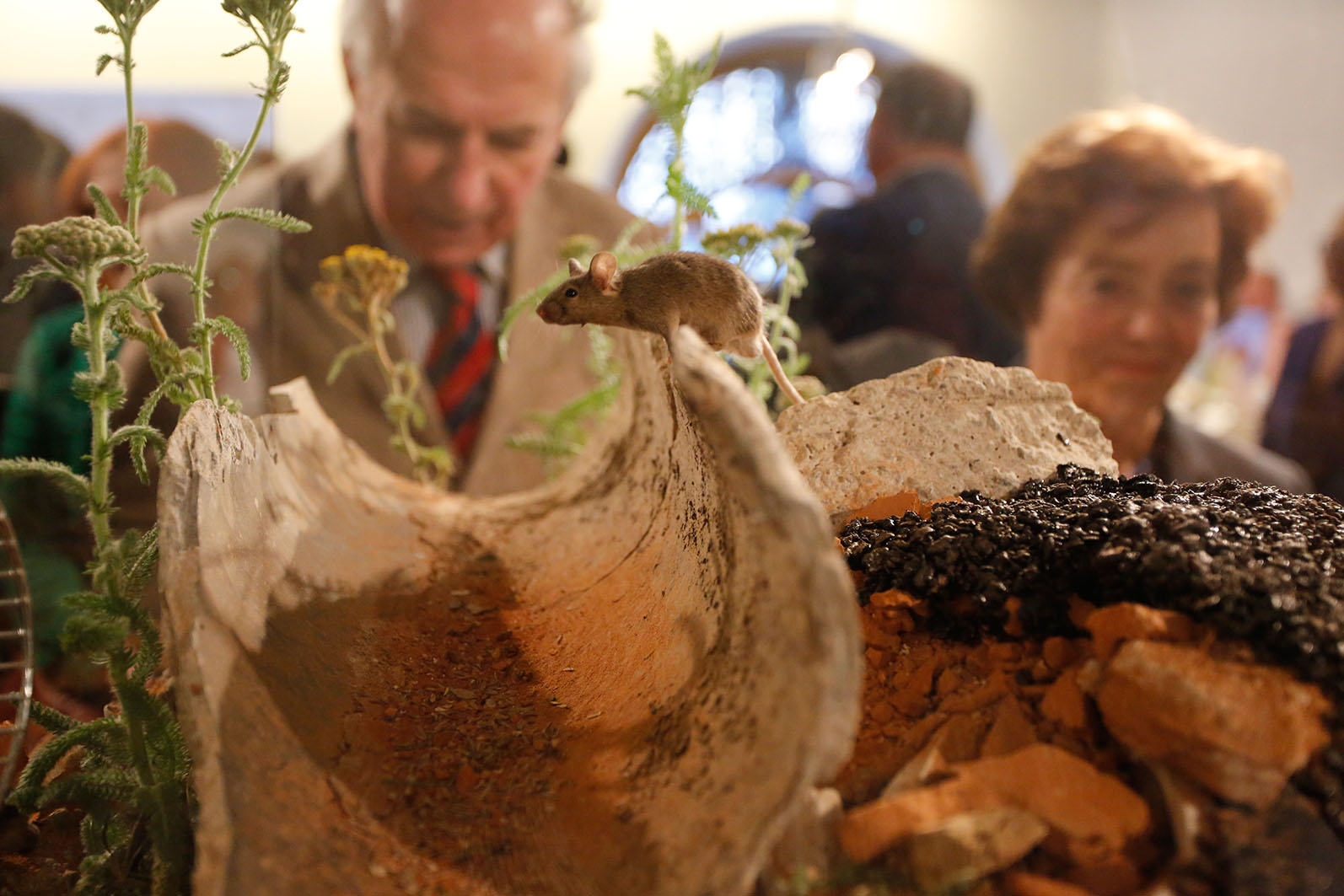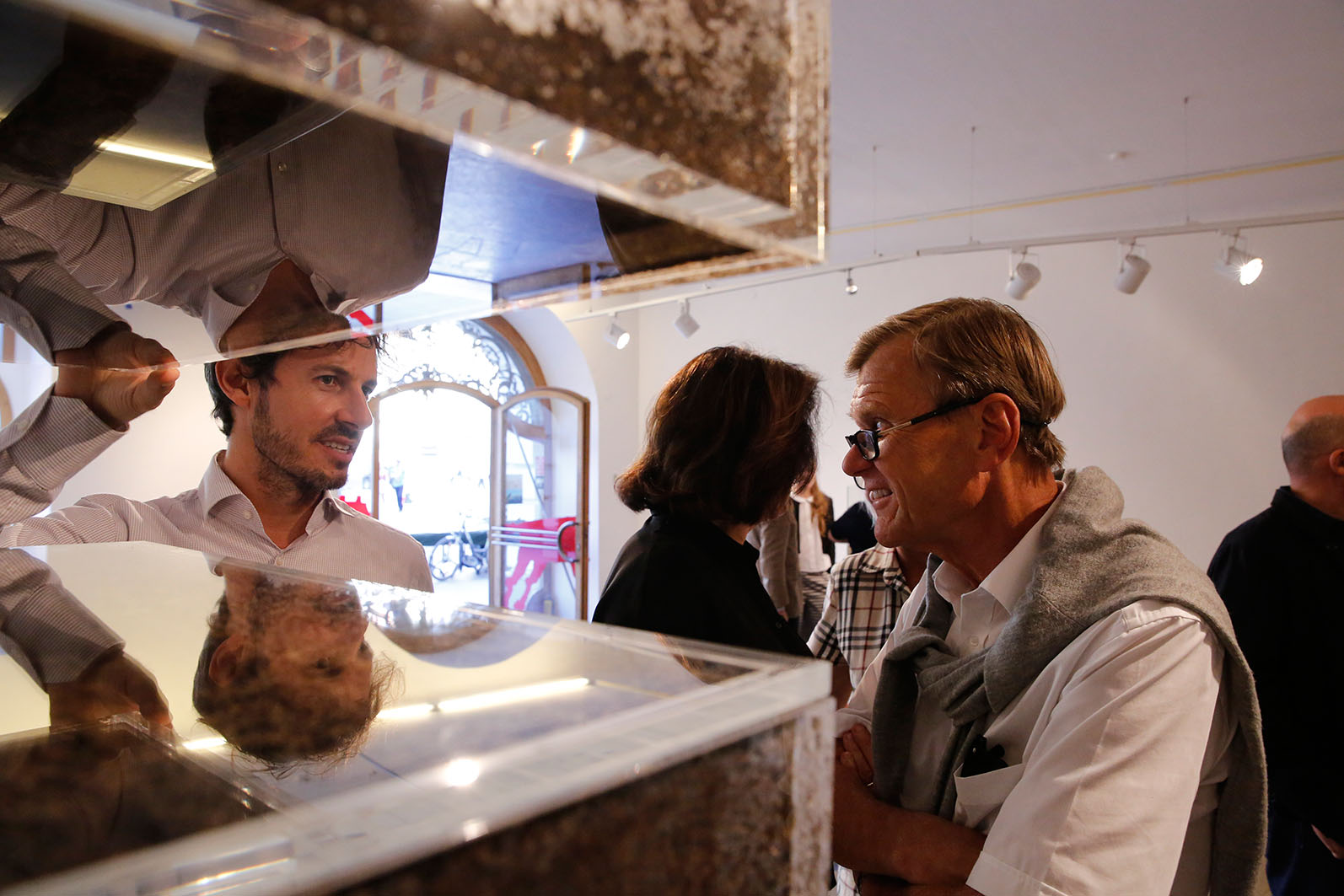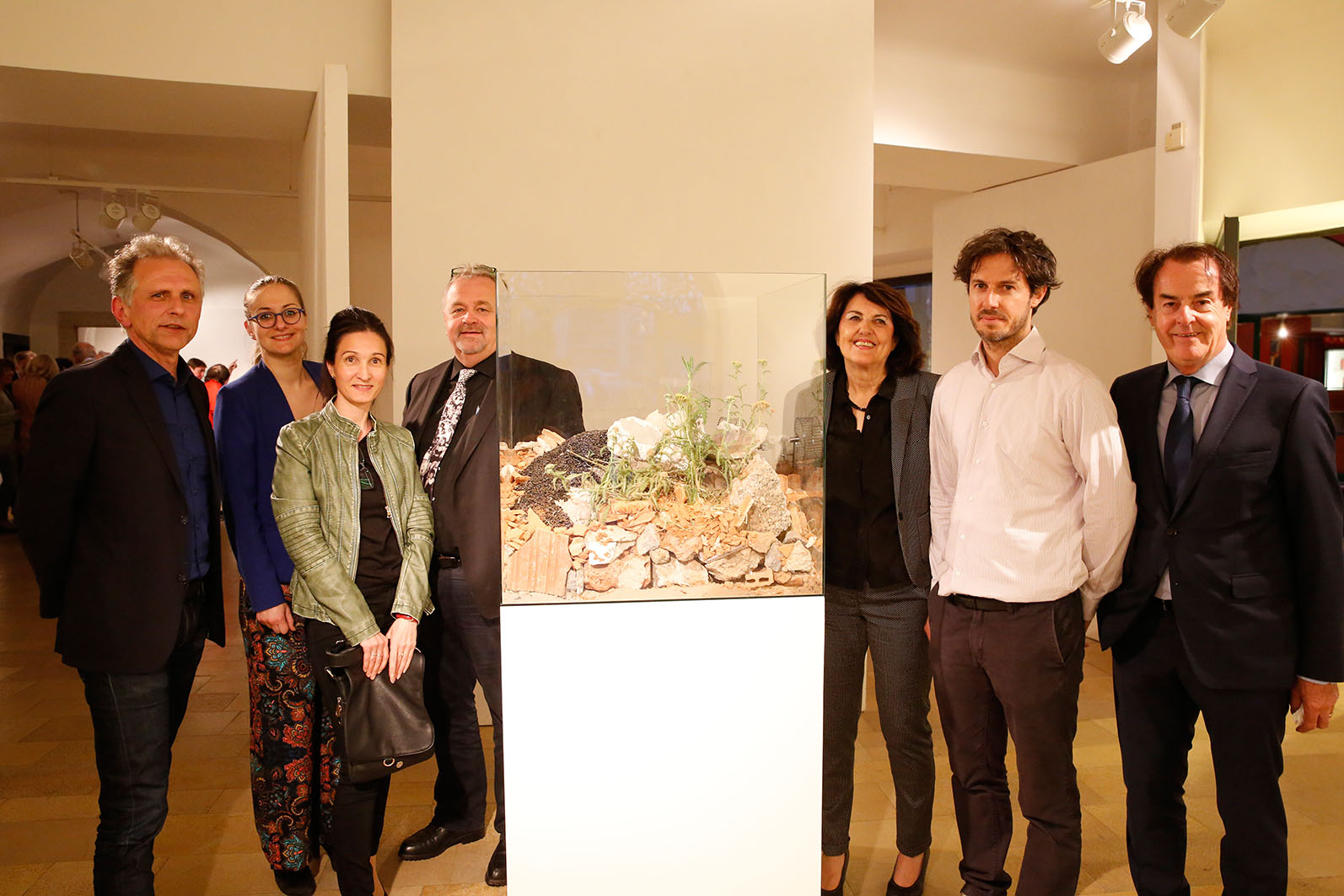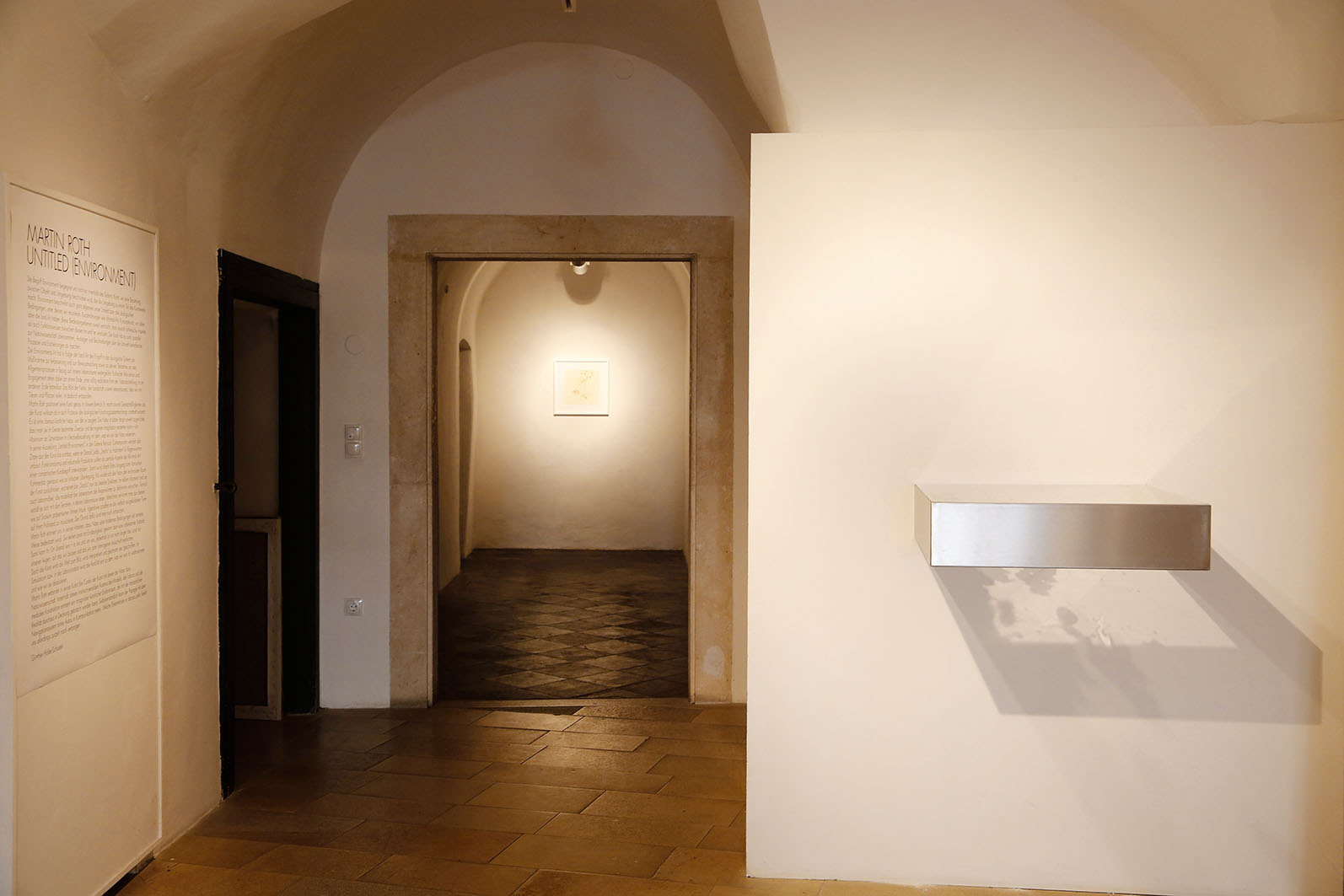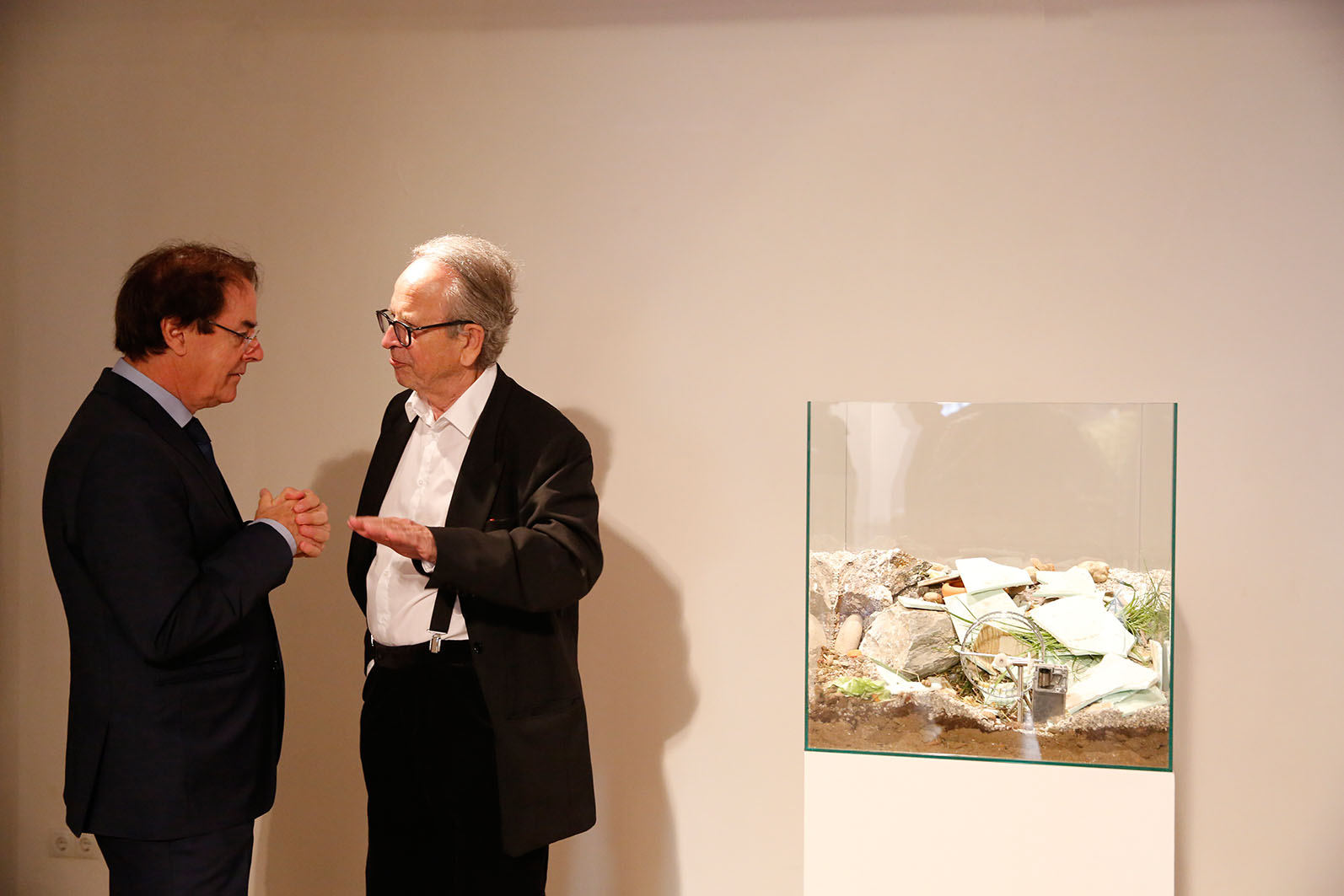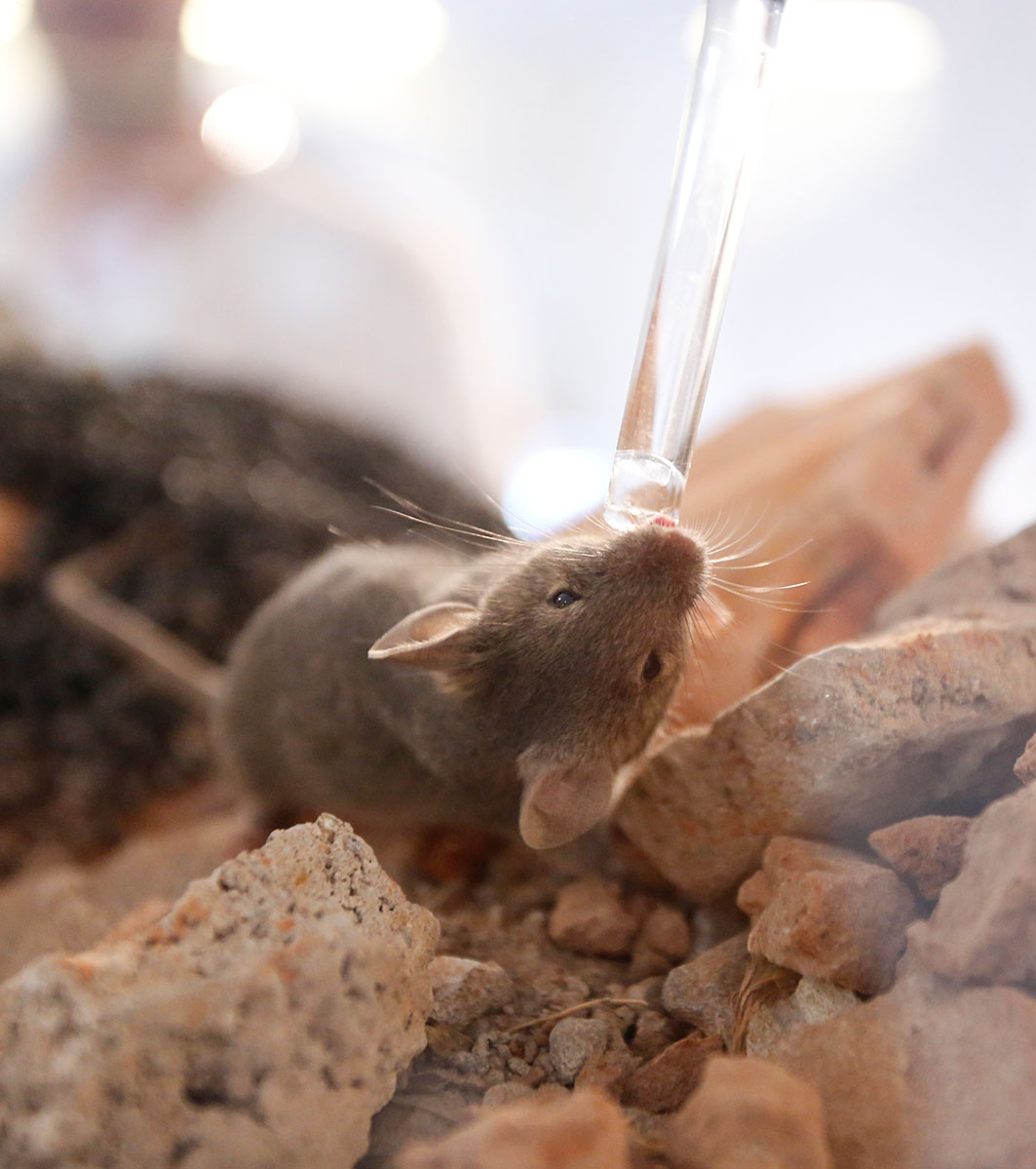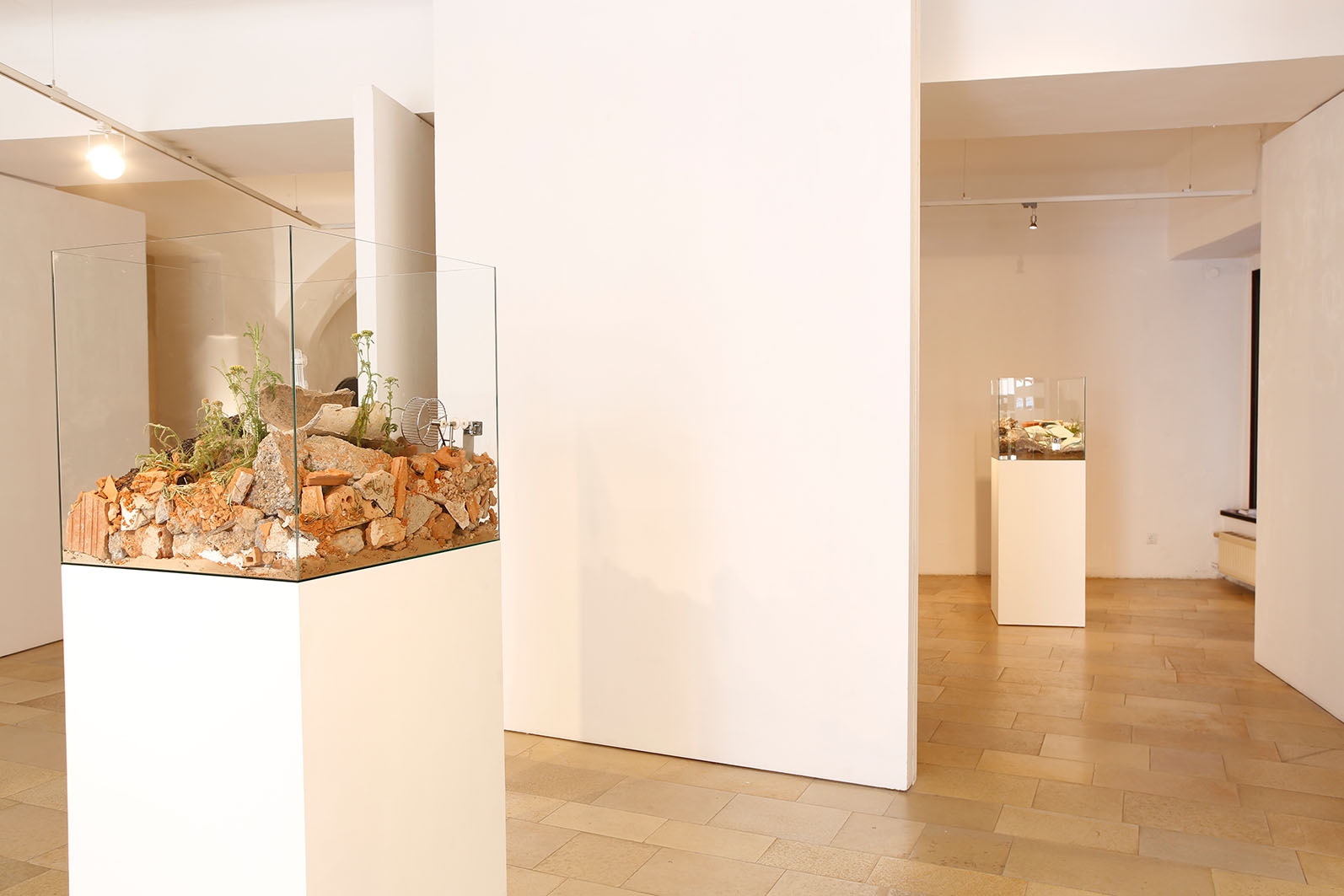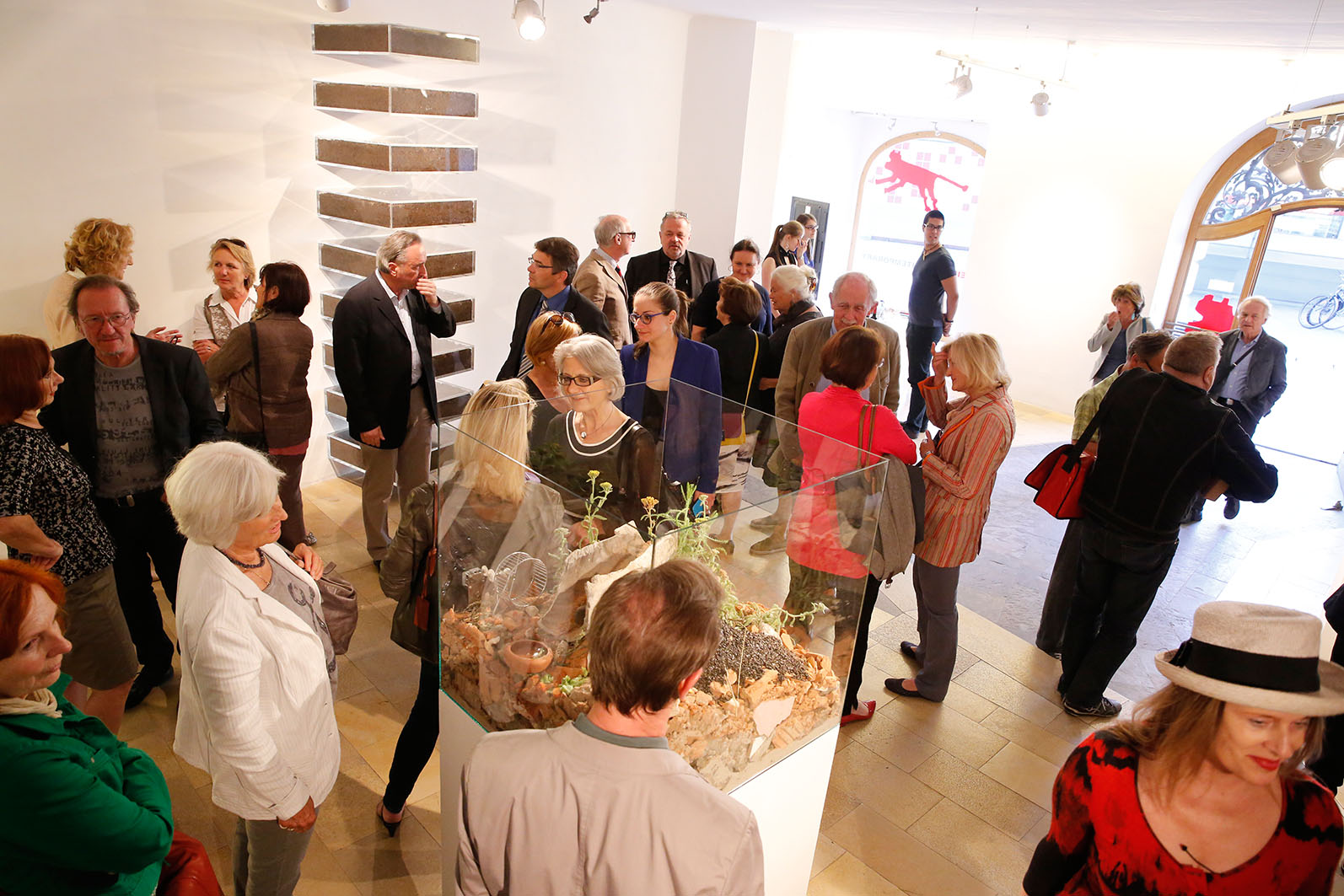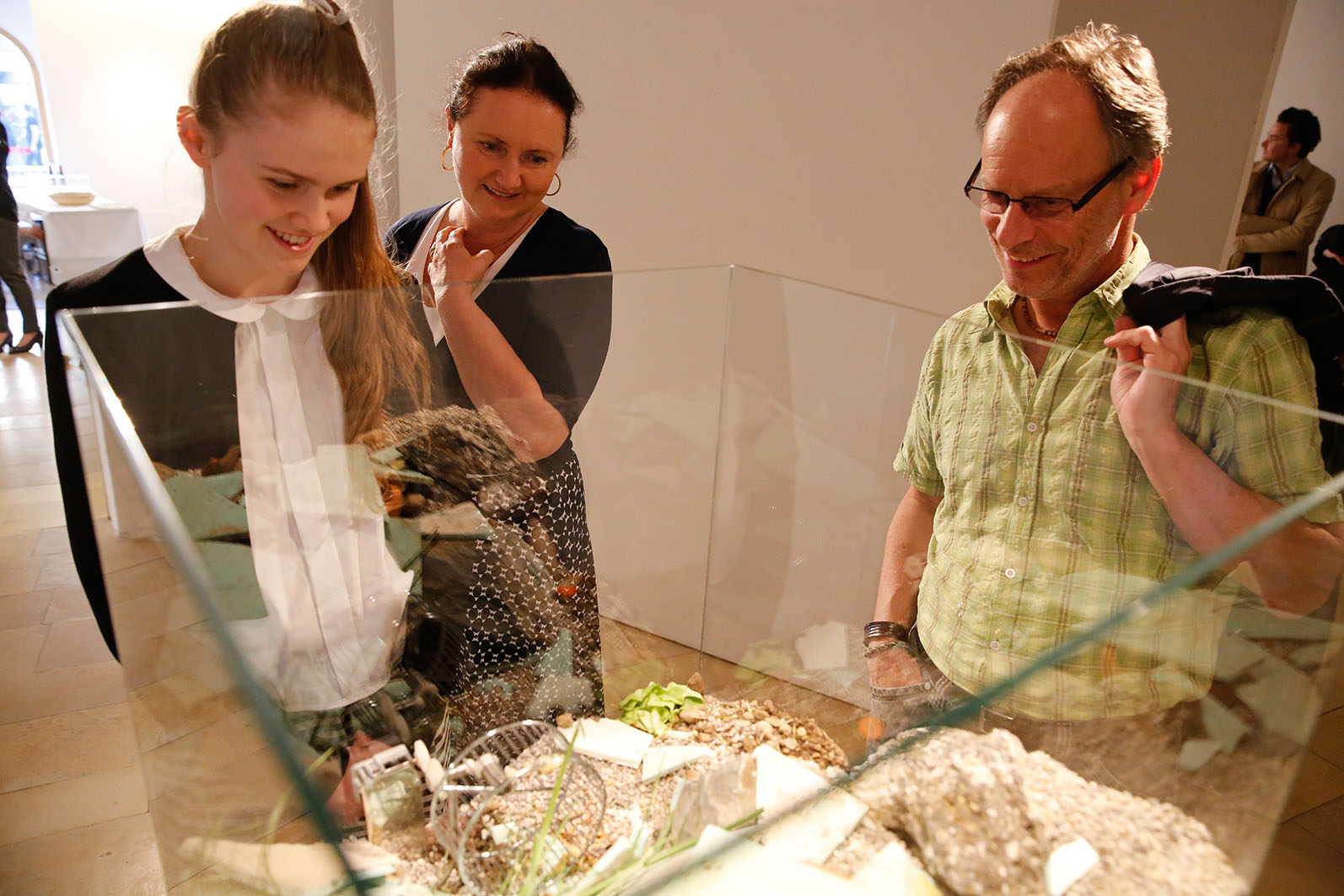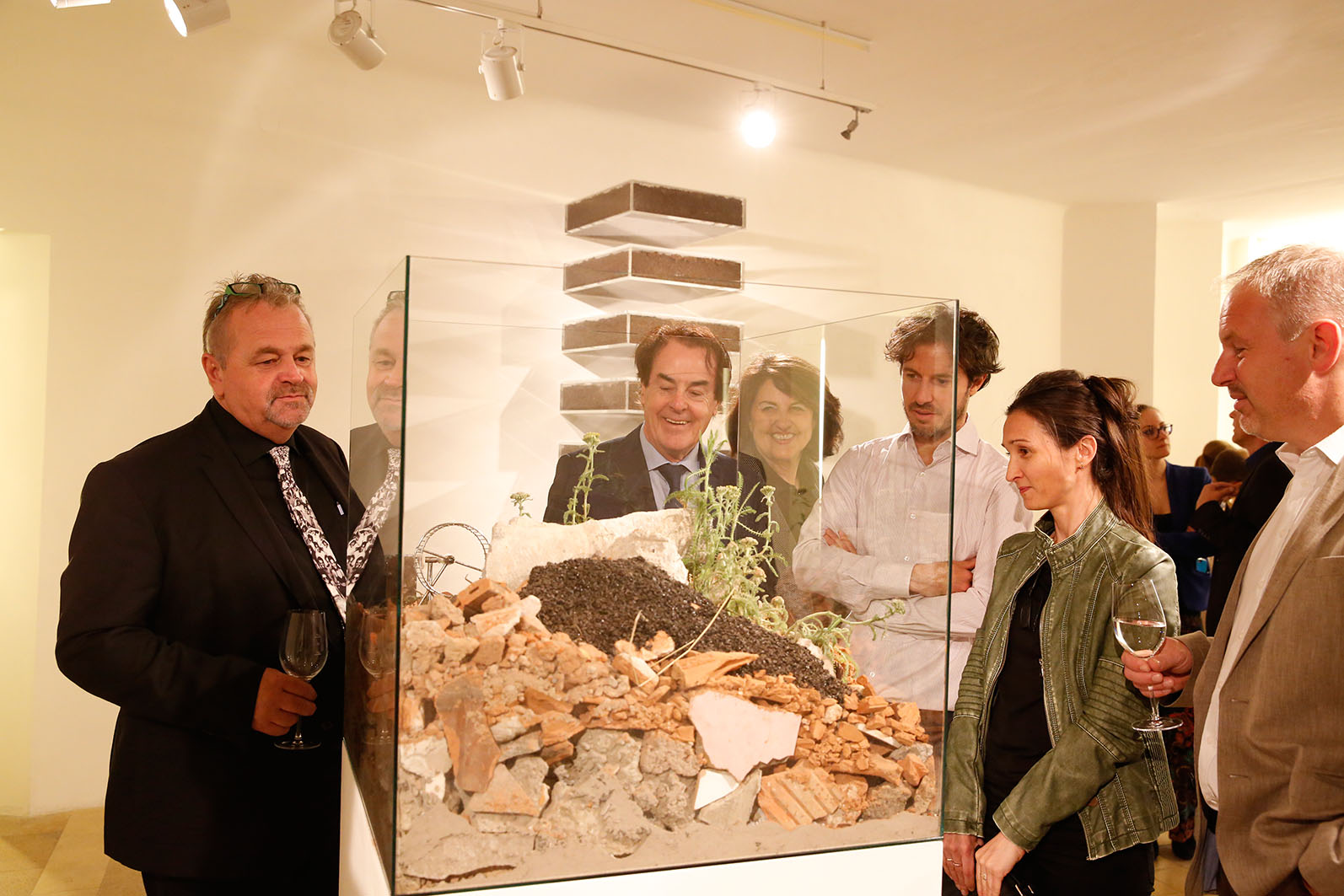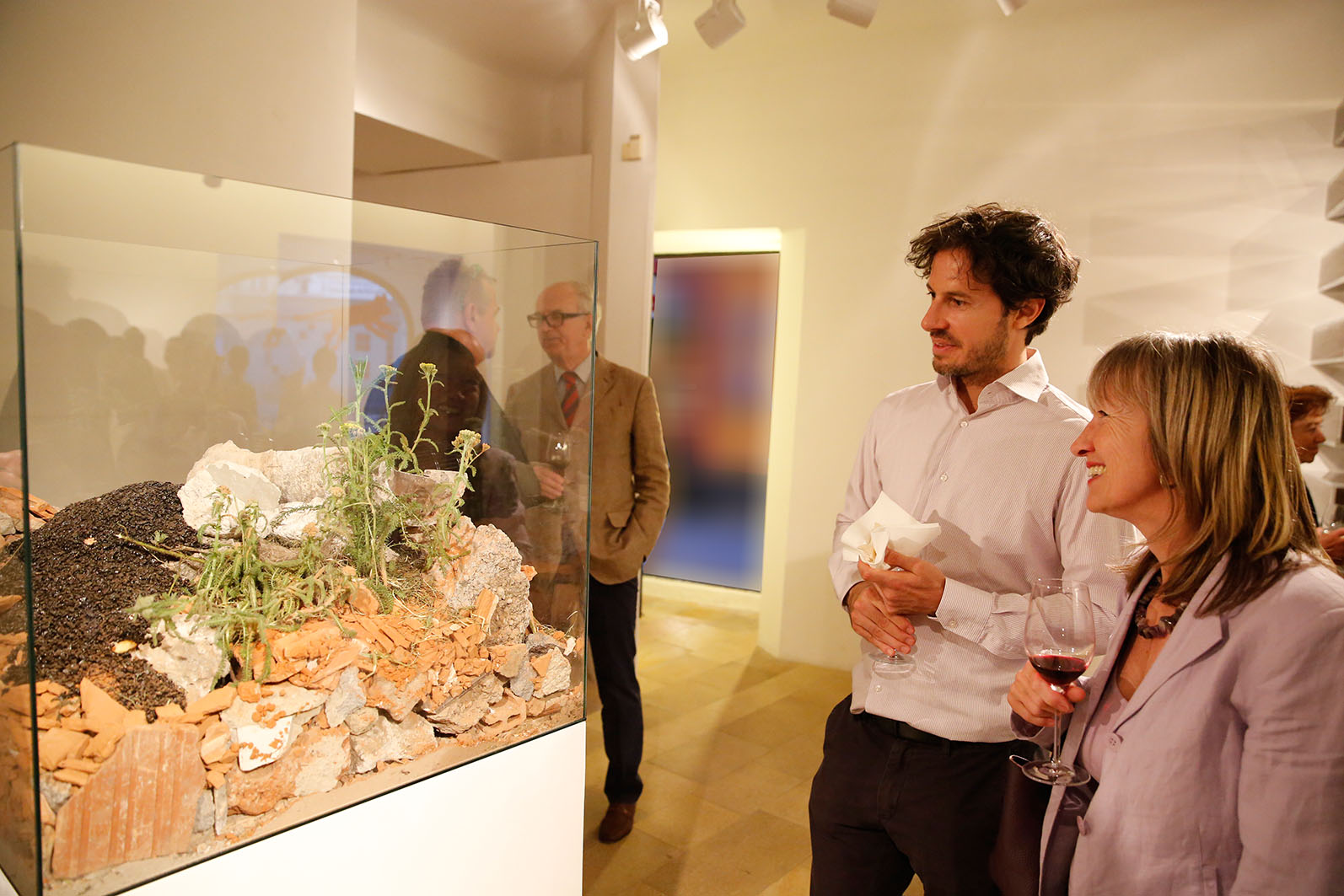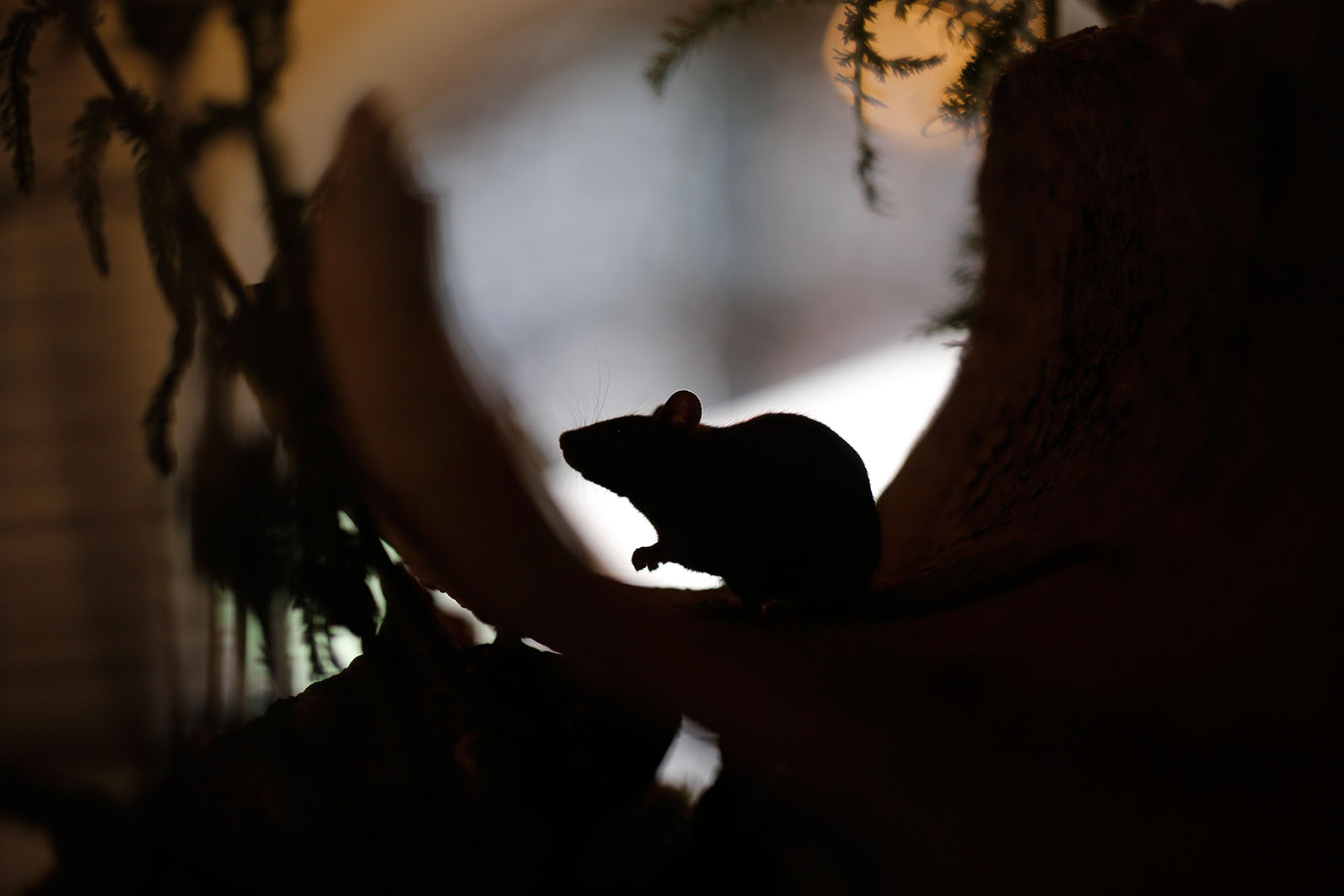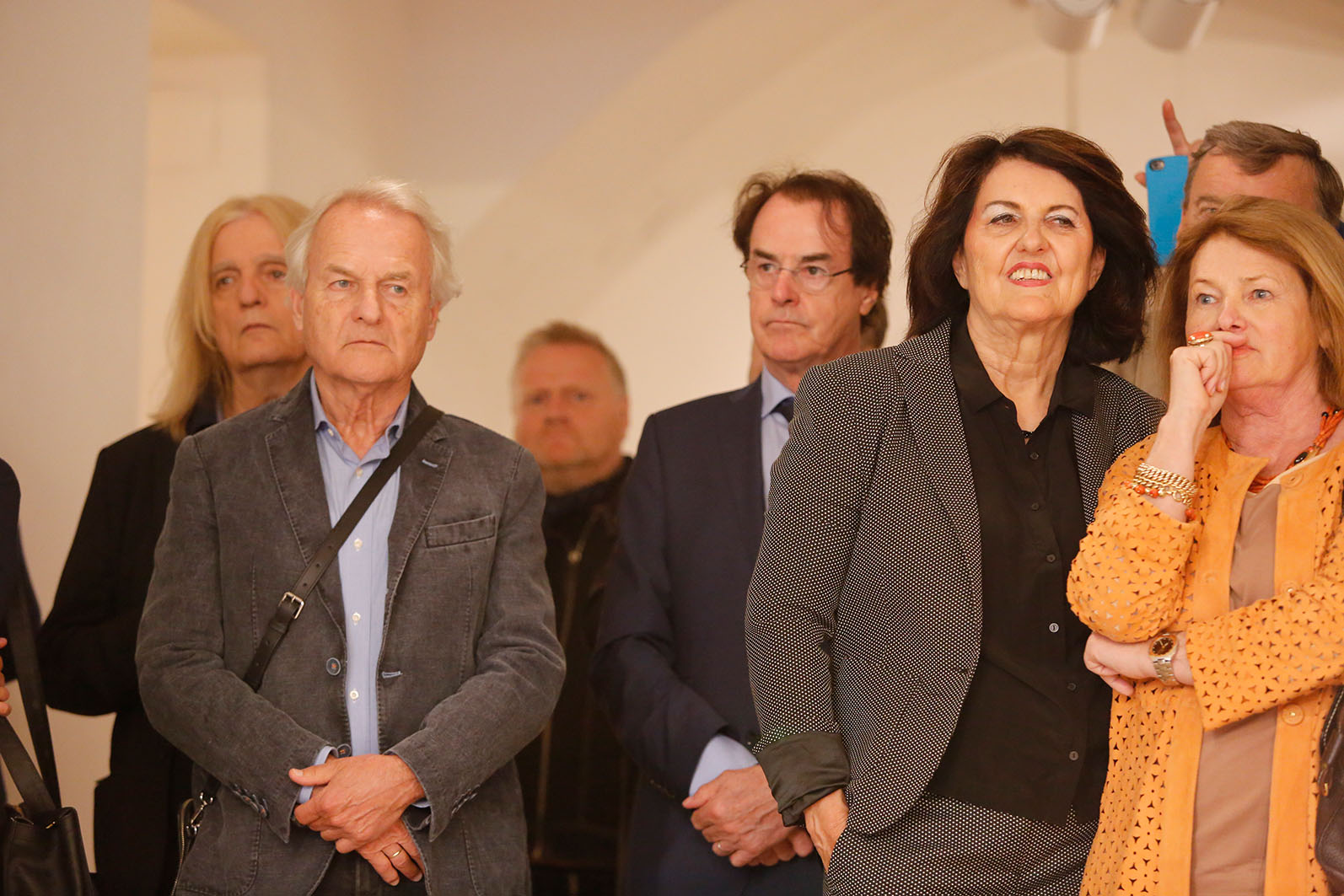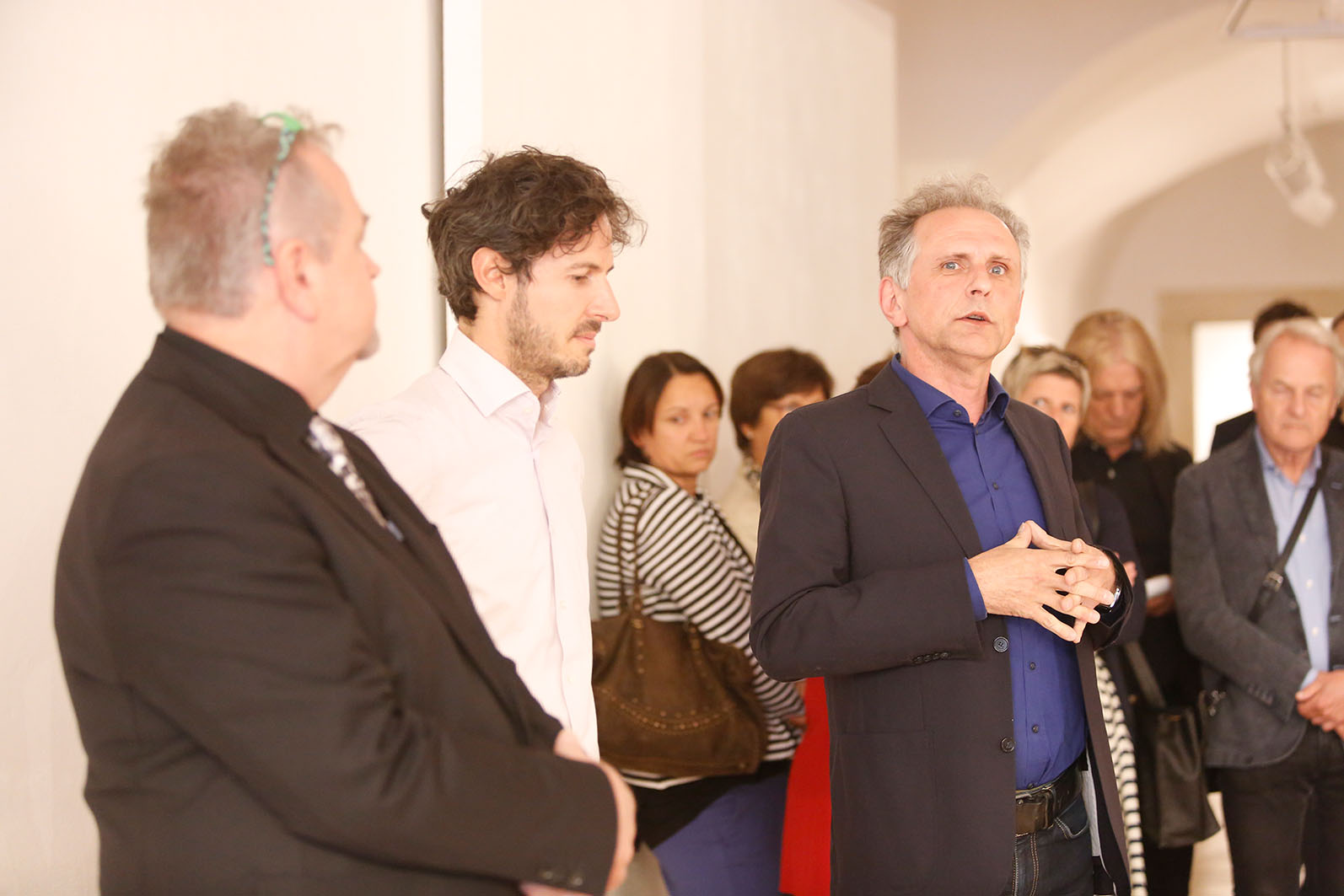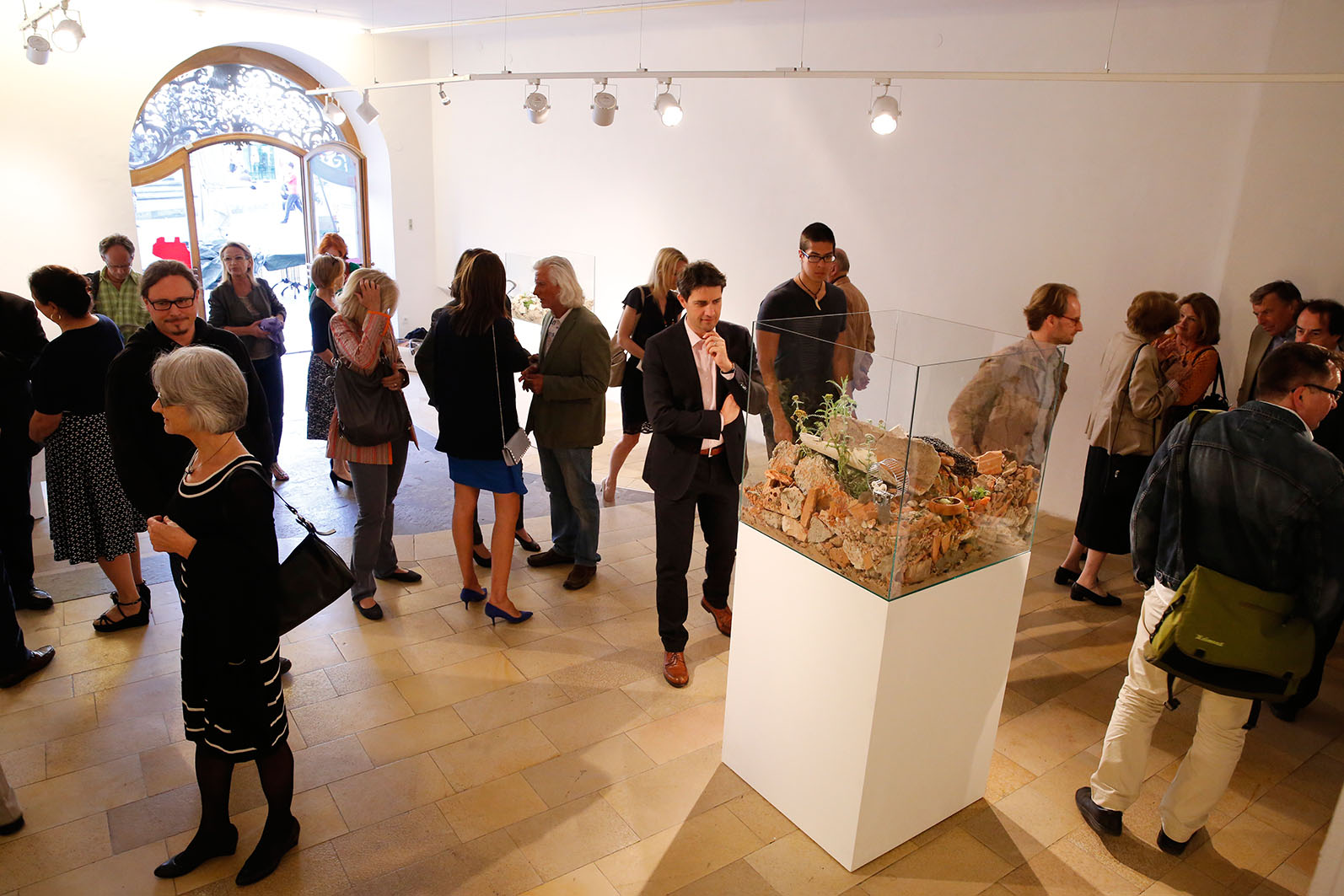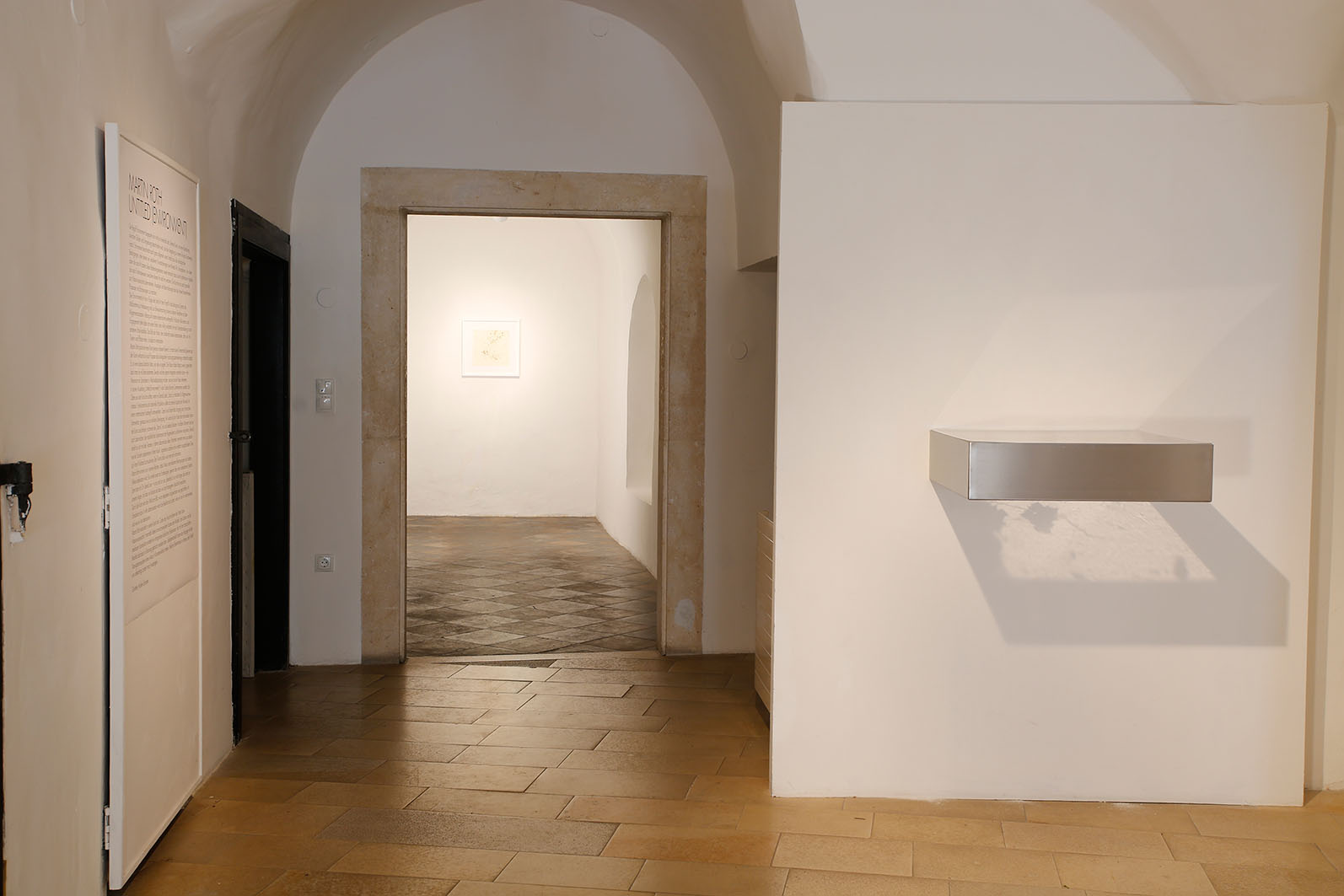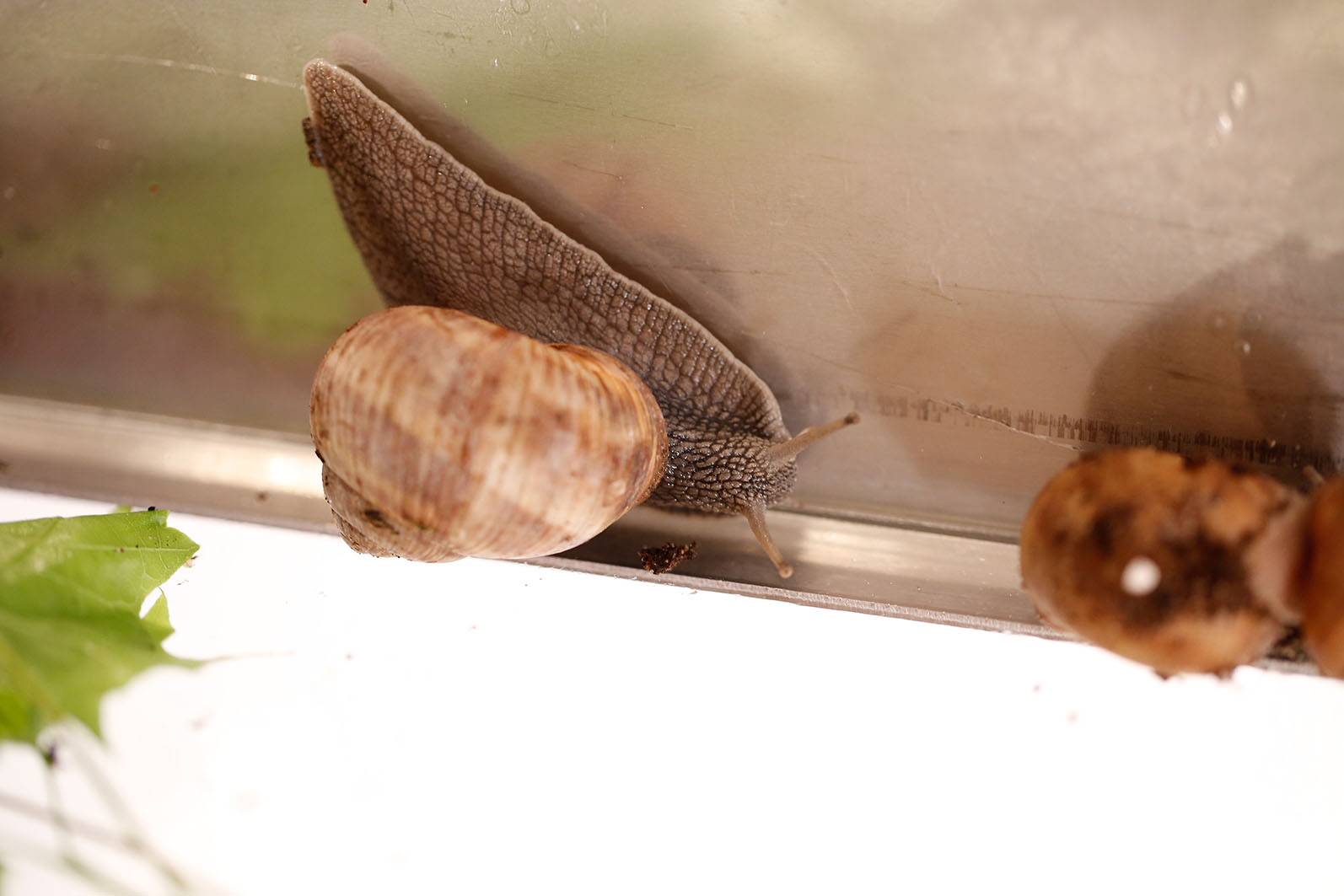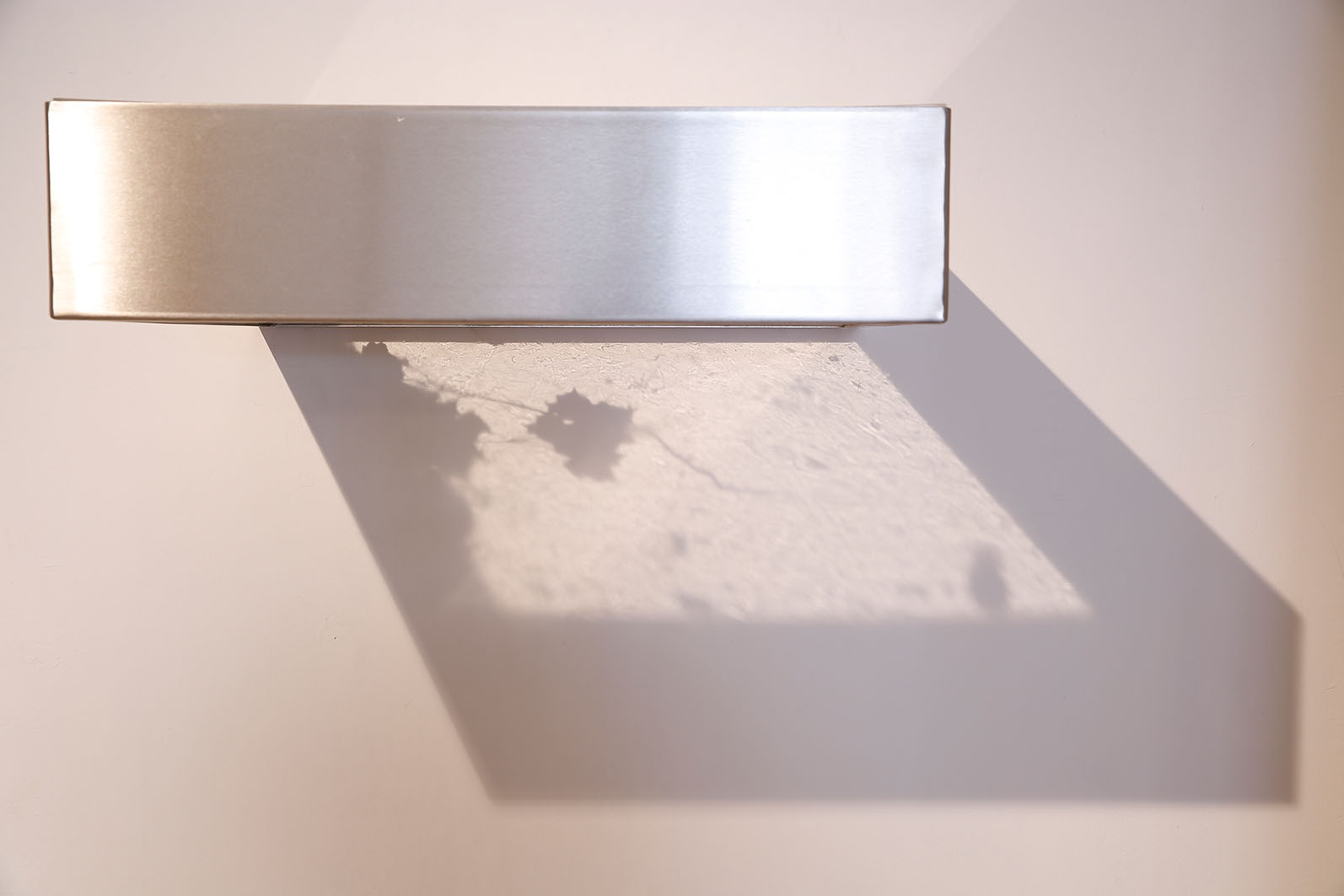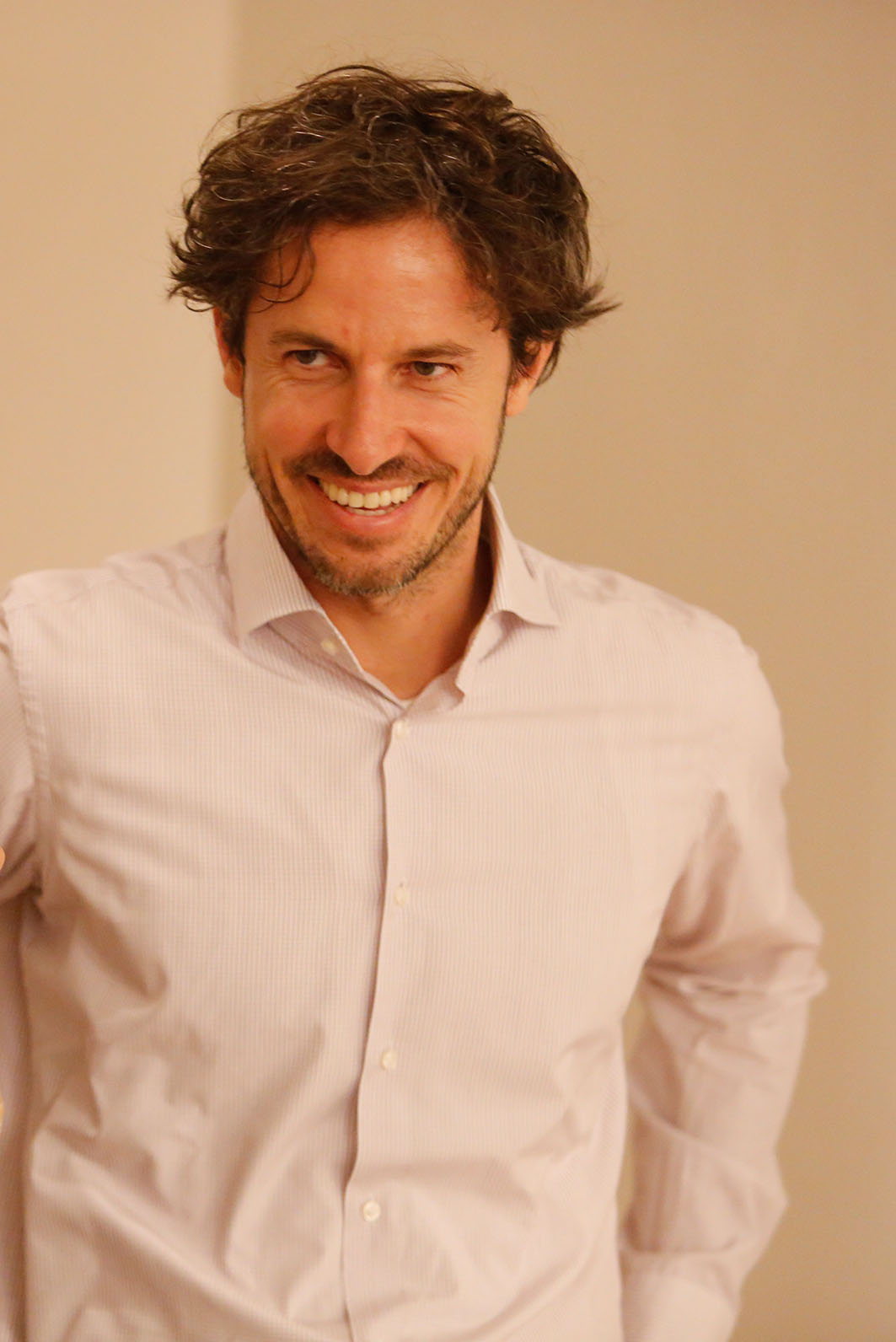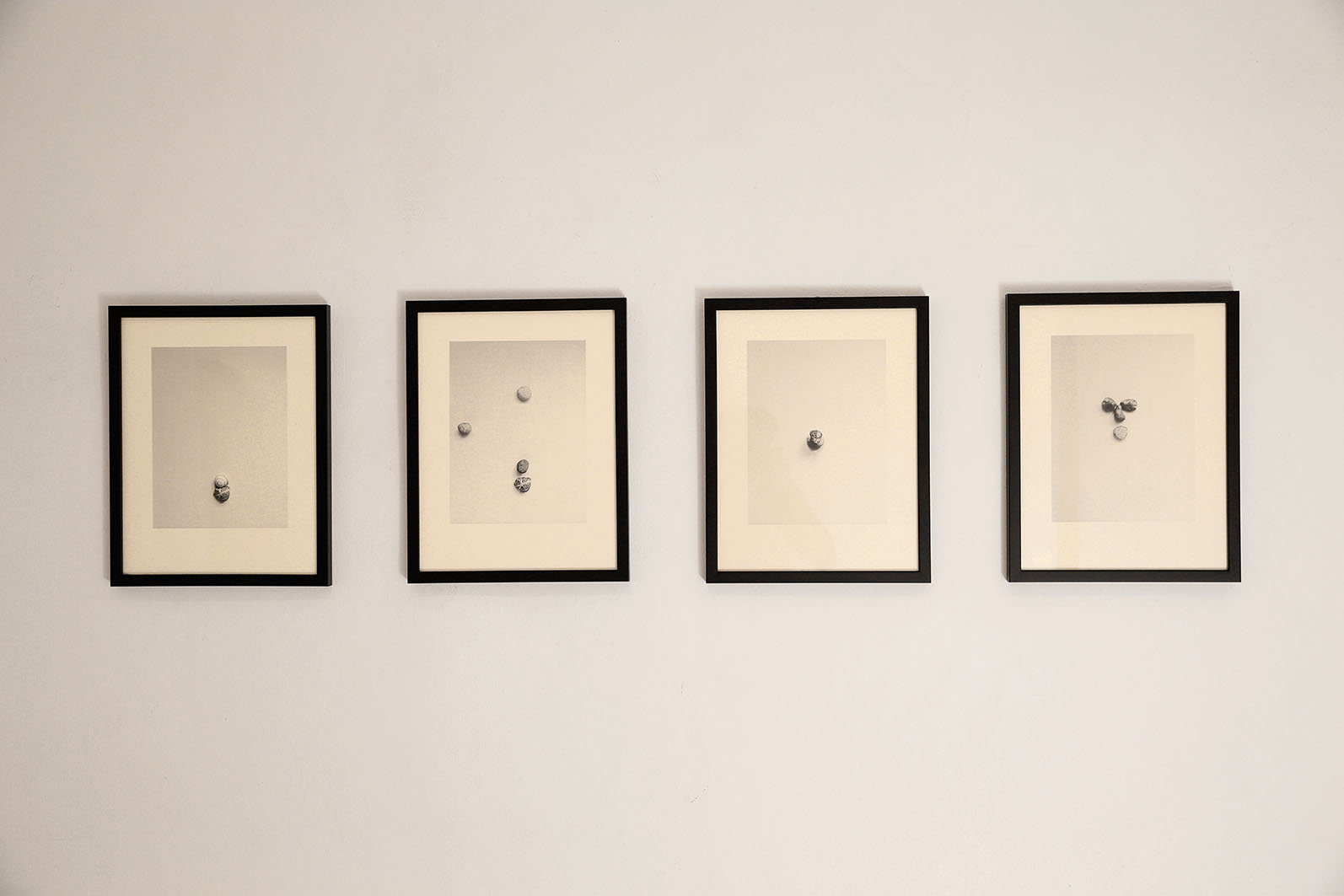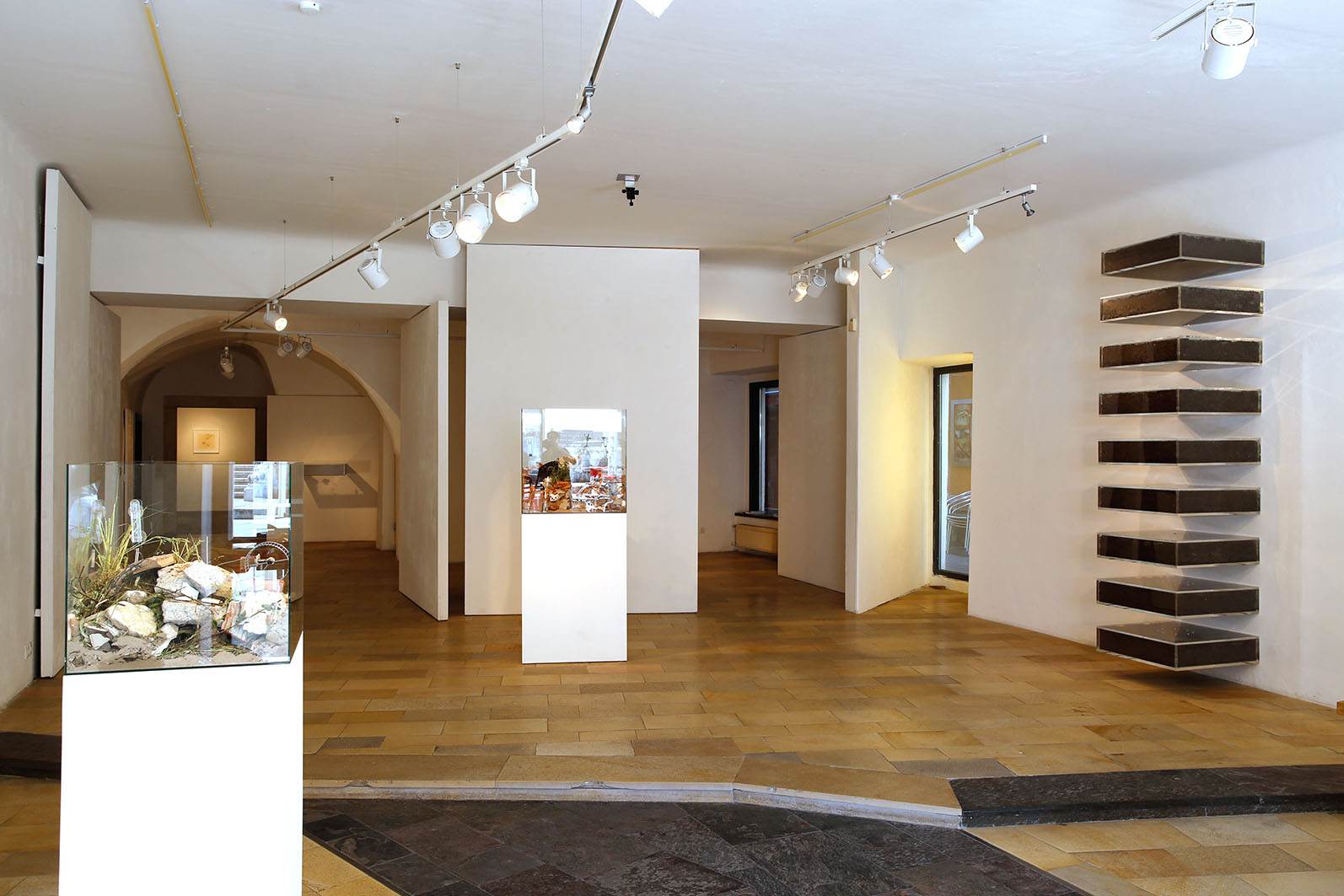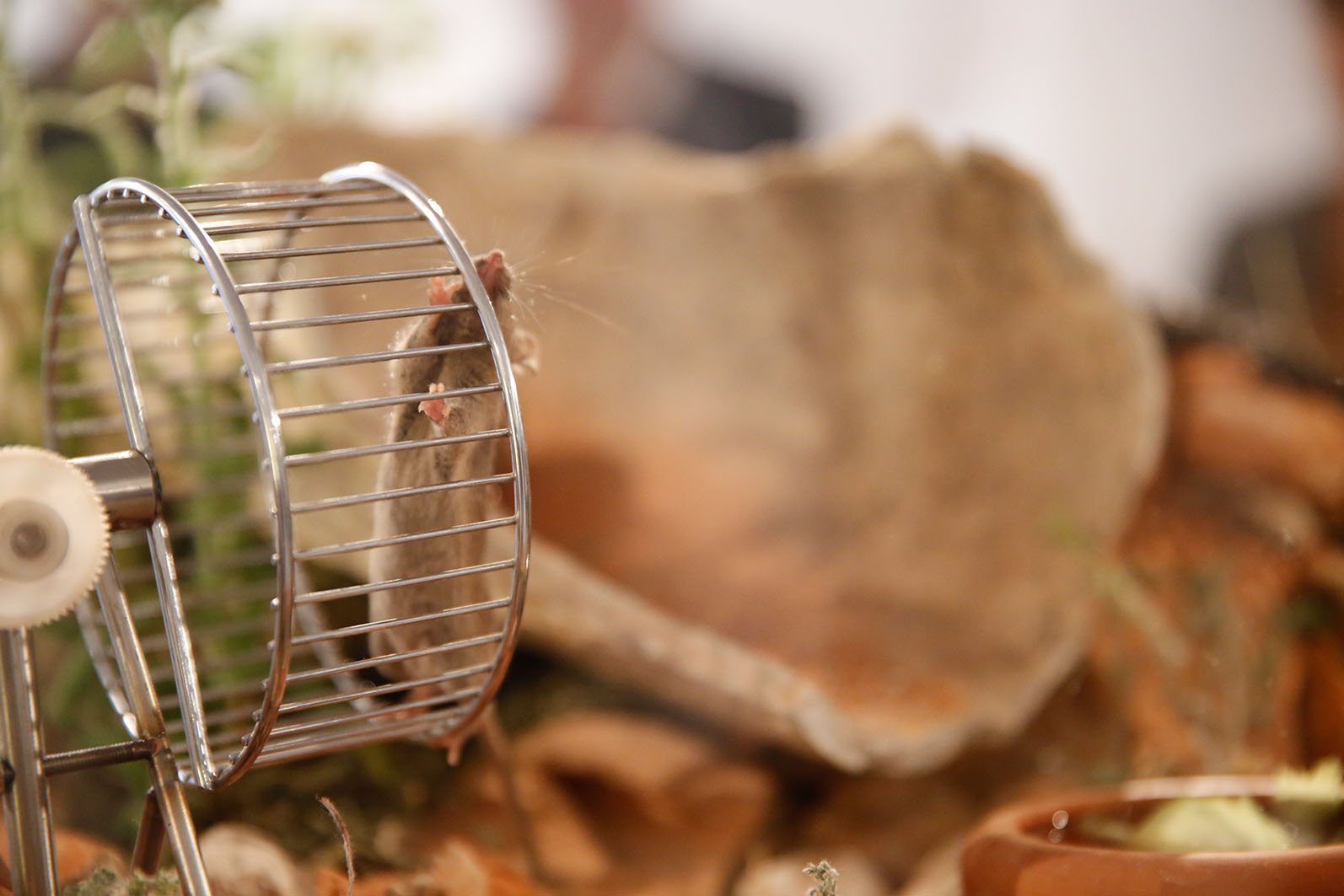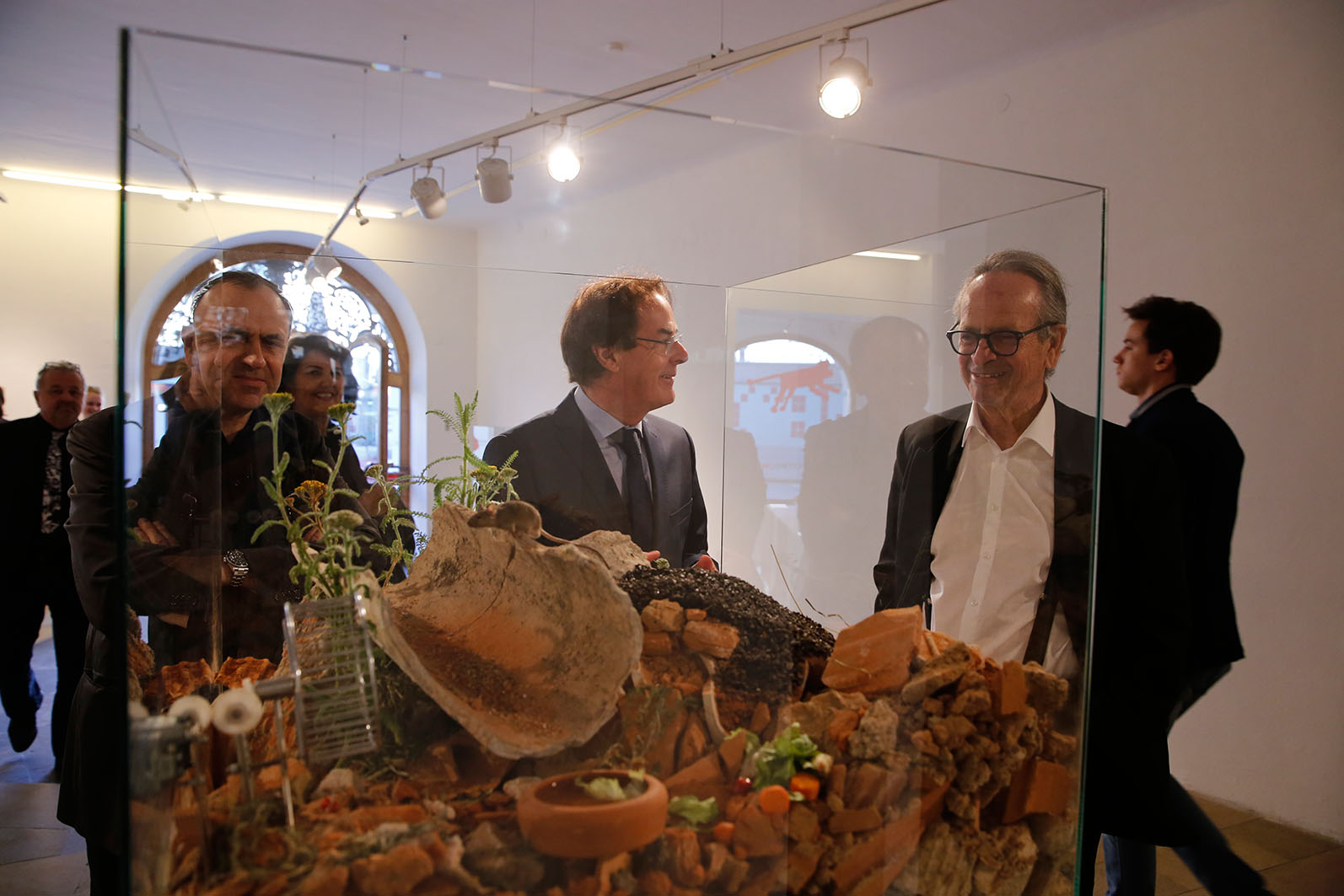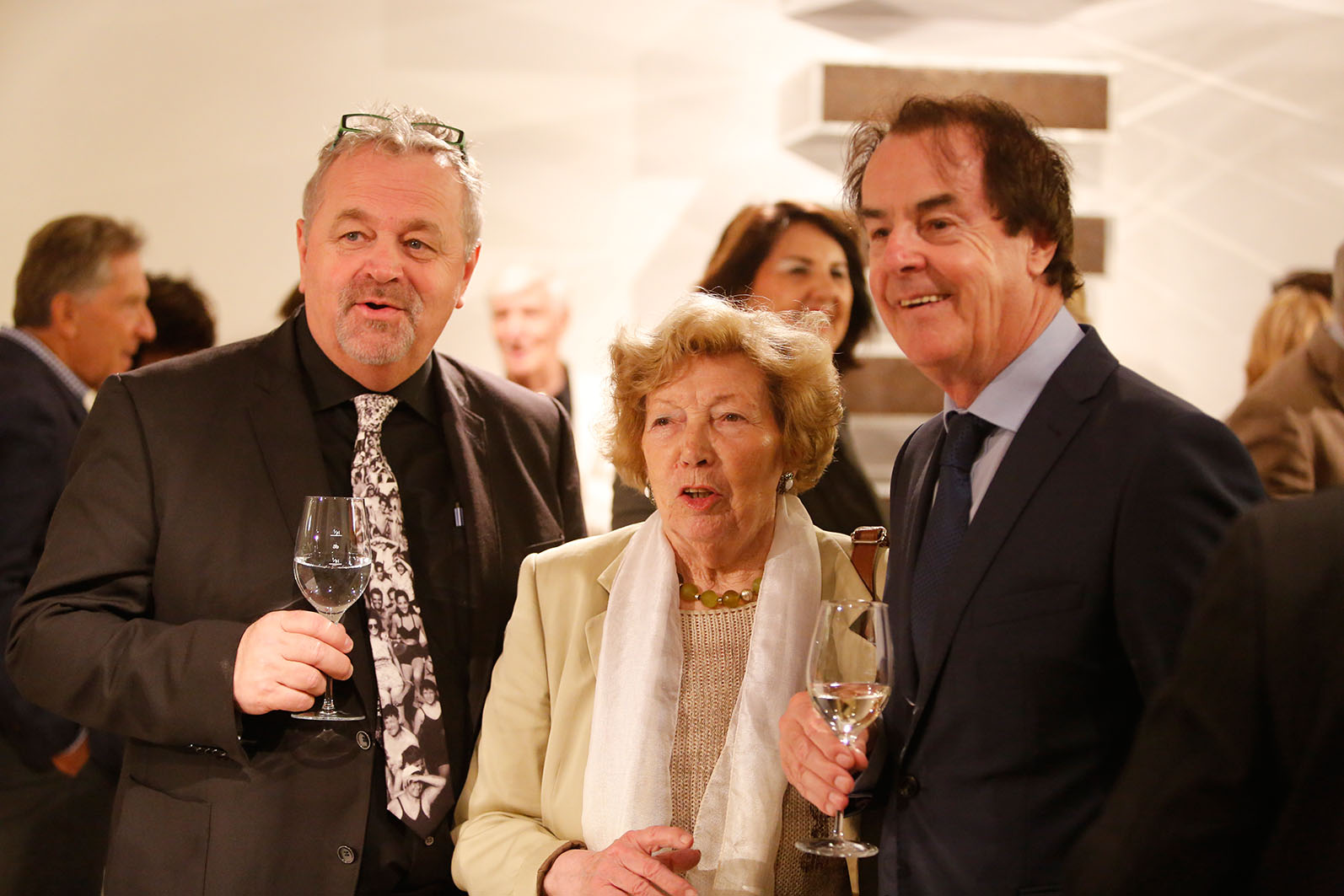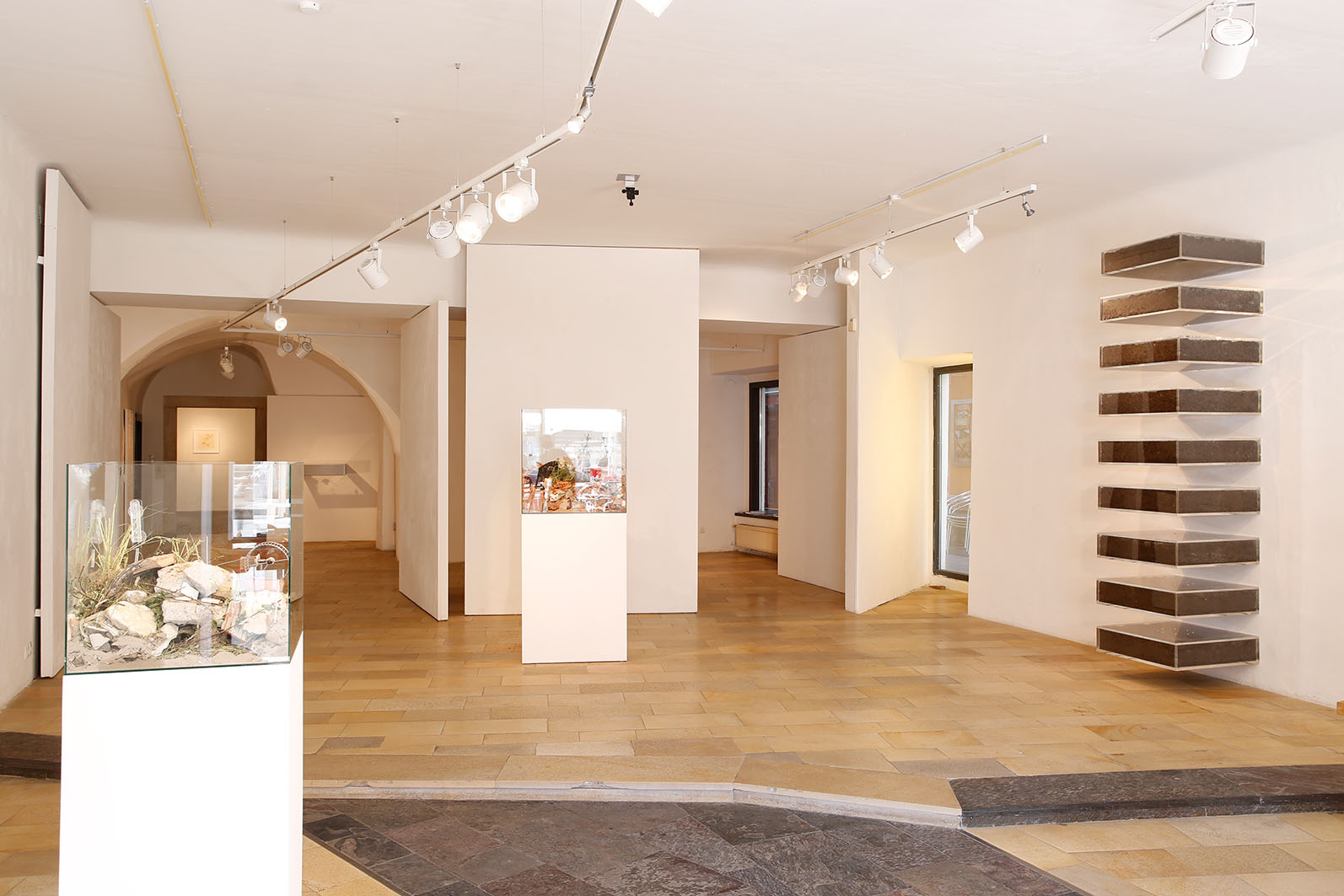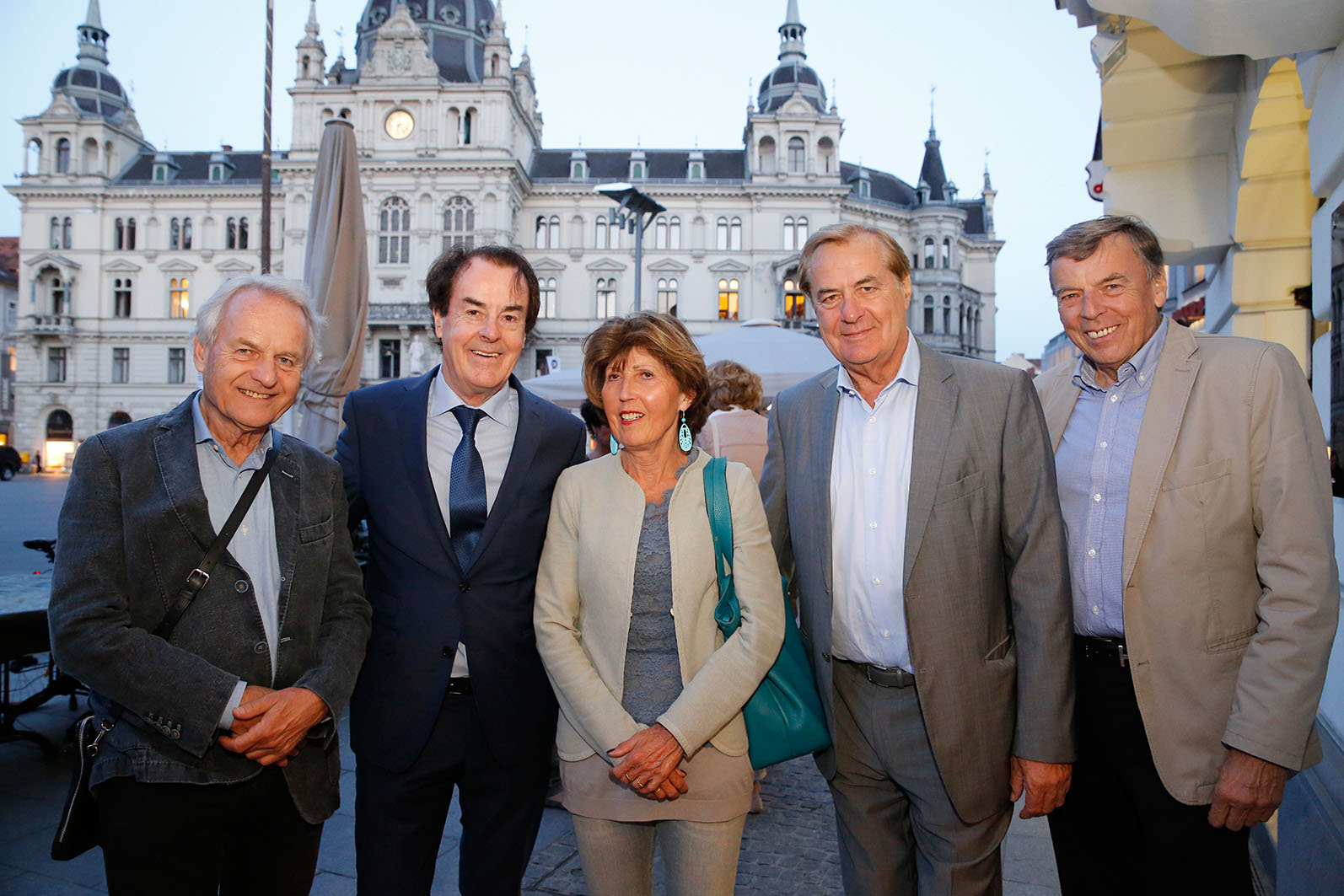12th of May – 23rd of May 2015
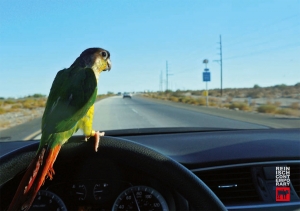 We encounter the term environment not just within the art system, where it describes the relationship between object and surrounds, rendering the surroundings part of the artwork. Environment also describes our surroundings in general, or rather the ecological conditions under which we exist. Art movements such as minimal art, conceptual art, and, primarily, land art have blended together these layers of meaning to such an extent that aesthetic aspects as well as functionalities switch back and forth between them. In parallel with the natural sciences, art has undertaken to make statements about and descriptions of processes and phenomena related to the environment.
We encounter the term environment not just within the art system, where it describes the relationship between object and surrounds, rendering the surroundings part of the artwork. Environment also describes our surroundings in general, or rather the ecological conditions under which we exist. Art movements such as minimal art, conceptual art, and, primarily, land art have blended together these layers of meaning to such an extent that aesthetic aspects as well as functionalities switch back and forth between them. In parallel with the natural sciences, art has undertaken to make statements about and descriptions of processes and phenomena related to the environment.
Environmental art, in succession to land art, has continued to position interventions in ecological systems as a measure of enhancement and development of awareness as well as of active participation in general processes related to our habitats. Political activism and commitment occupy one end of the spectrum, with utterly altered forms of representing nature detectable at the other. The image of nature, of the landscape of our habitat, which we share with animals and plants, was created this way.
Martin Roth situates his art exactly in this area. He potentiates the principles of art while quoting processes from the context of biological research. Thus the nature he conceives is decidedly artificial. Nature is rigged to such an extent that it can be understood as serving certain functions and one’s own imagination – a maximum of illusoriness in interrelation with that which we recognise from nature.
Roth’s show Untitled Environment at Reinisch Contemporary renders visible certain quotes from other fields of art, such as when Roth reconstructs Donald Judd’s ‘Stacks’ as habitats for earthworms. Functionalism and industrial production, central aspects of minimal art, are intended to undercut any romantic notions of art. As such, Roth’s process becomes an ironic comment as well as a critical consideration. As if nature were reclaiming the technoid space of art, the ‘Stacks’ appear as enlivened structures. Simultaneously, they are lab furniture, which attempt to propose diorama definitions of earthworm habitats. Similar properties apply to the terrariums, which house lab mice. Sometimes music can be heard emanating from these display cabinets, presented as if on plinths. Somehow these trained animals manage to make music in their test-bed; the causes will still need to be investigated.
Roth reminds us in his work that, under modern conditions, nature assumes different significations. It may lose its unambiguousness but it gains a strange new tonality. As such, its place can be anywhere – within us and without us. In any case, it is no longer the land in front of our eyes, which we behold and condense into a homogenous extract.
Art renders the world an image, interprets it and thereby creates it anew. Only in a simulacrum, or rather, in a laboratory, reality is transformed into that which we perceive of it and how we idealise it.
Roth’s art fuses the codes of art with those of nature or, as the case may be, of natural science. Within the ironic-sensitive cosmos of the diorama, the laboratory and media constructs, an imaginary artificial-experiential space is created, which may, by all means, be made to line up with factual reality. Naturally, a parrot can enter into communications with the navigation system of a car. The insights it may derive from this, however, still remain unknown…
Günther Holler-Schuster
